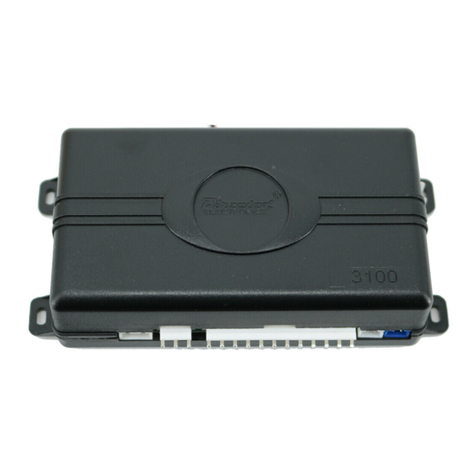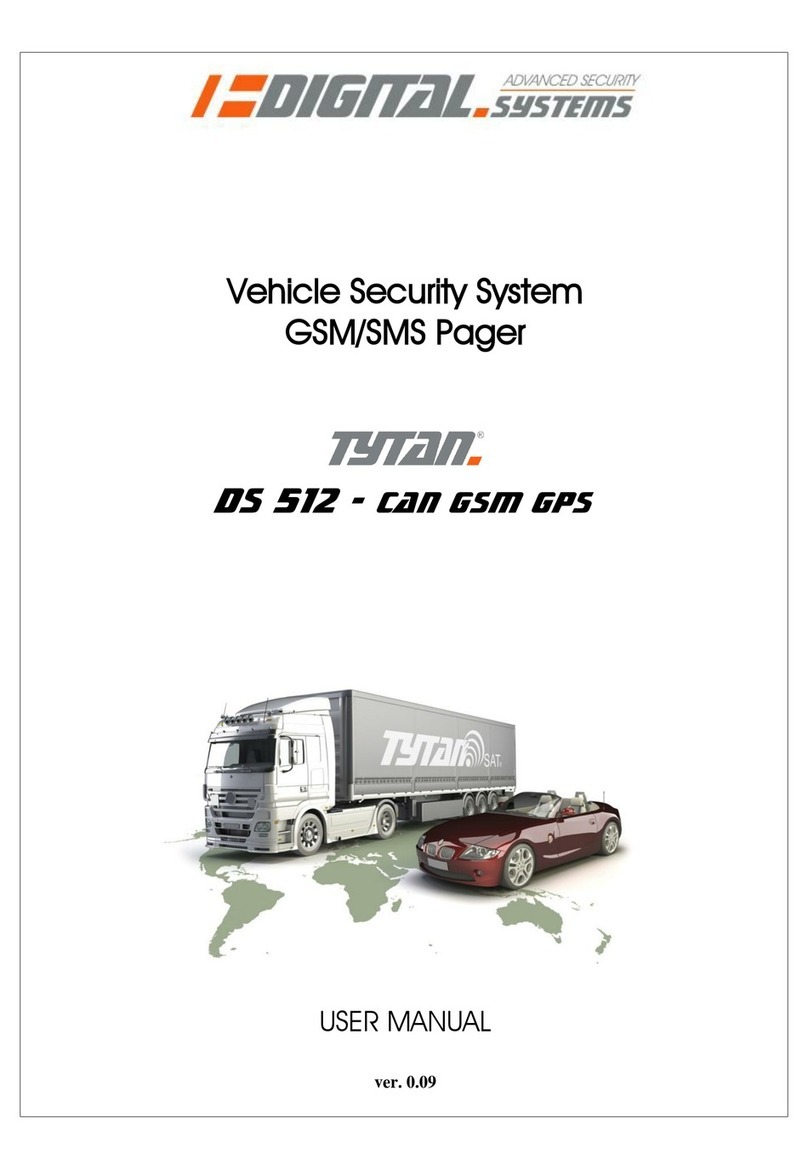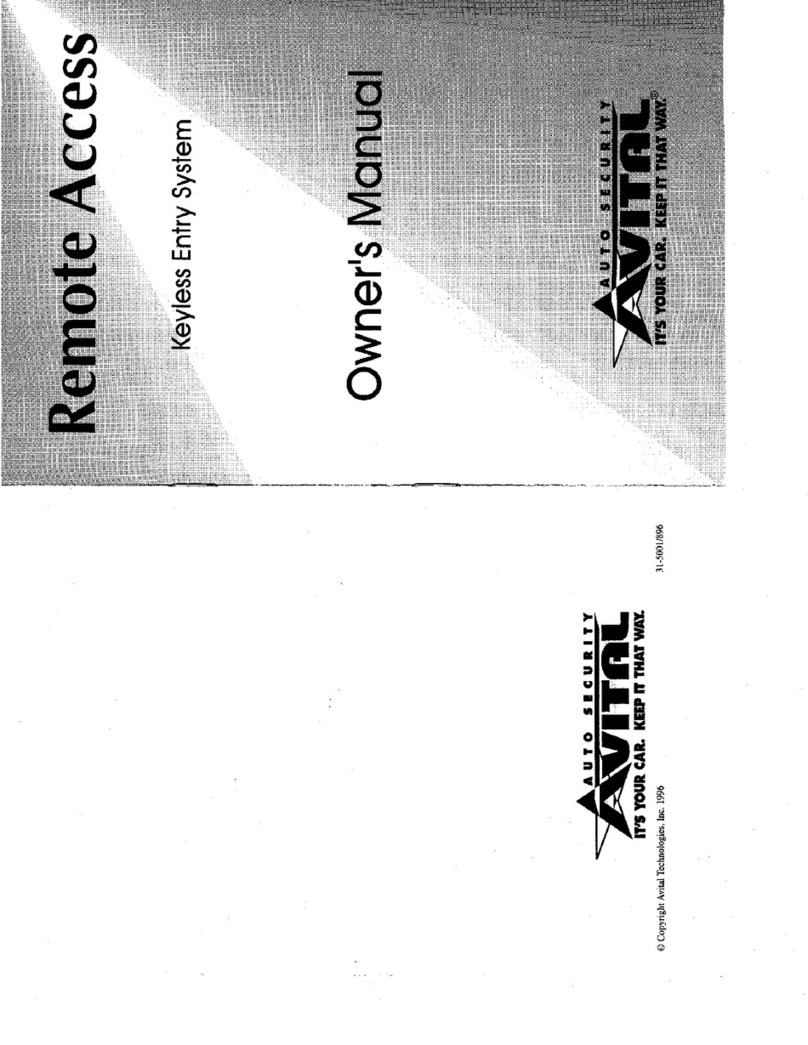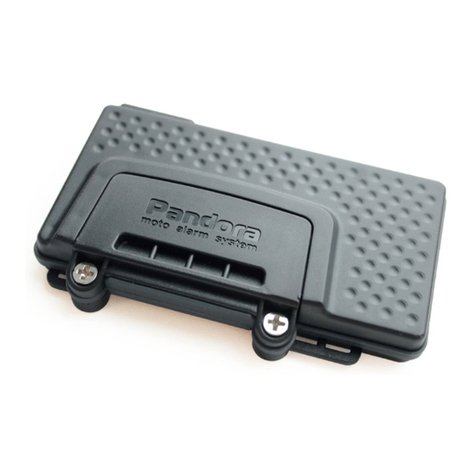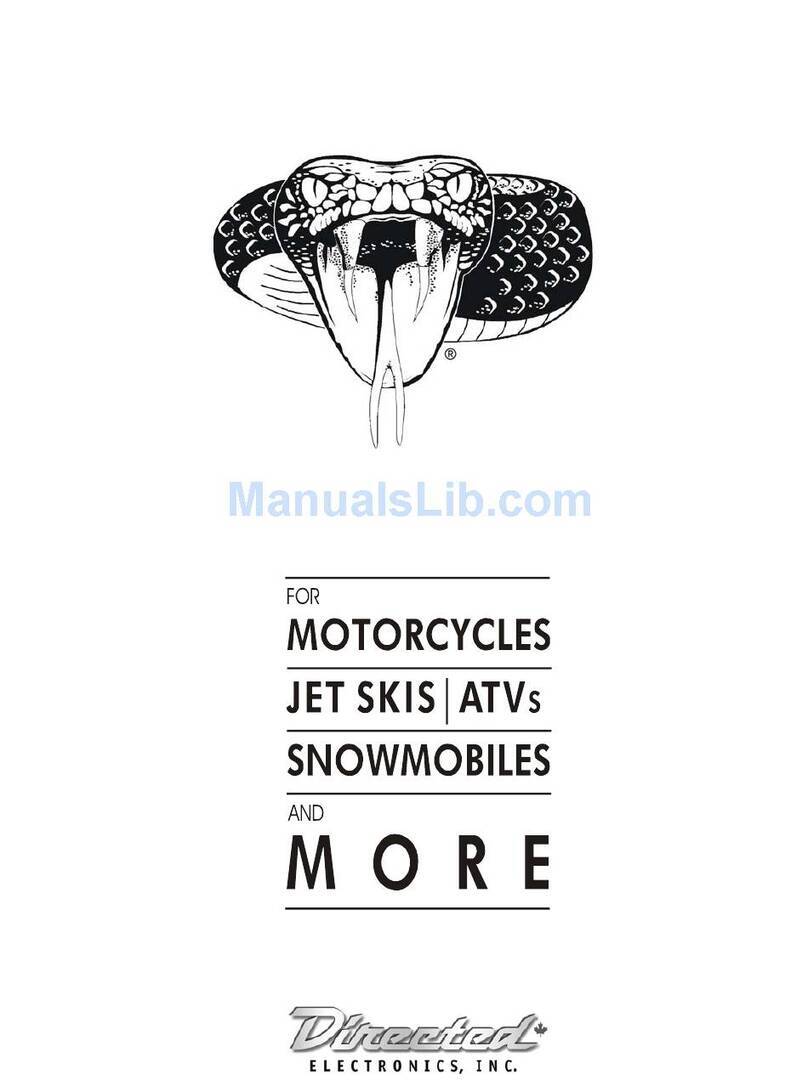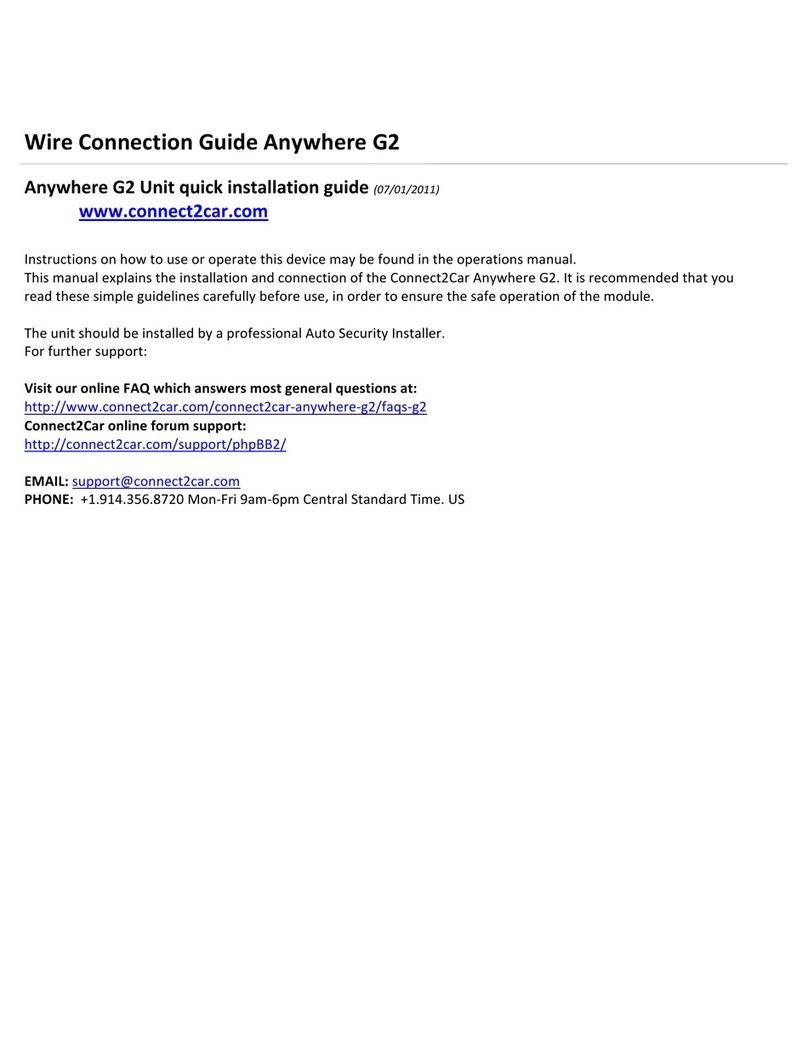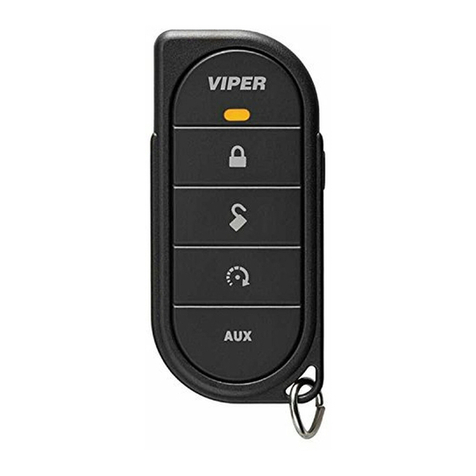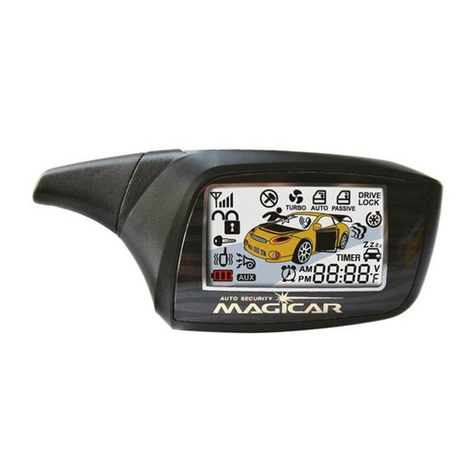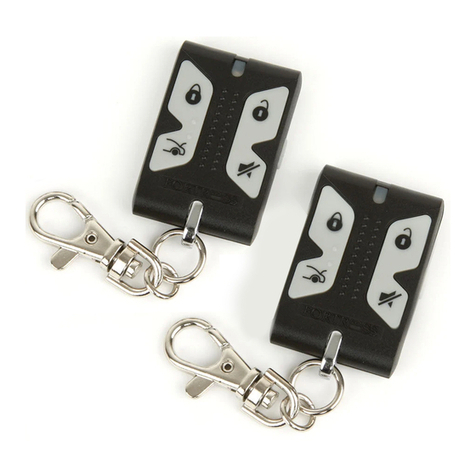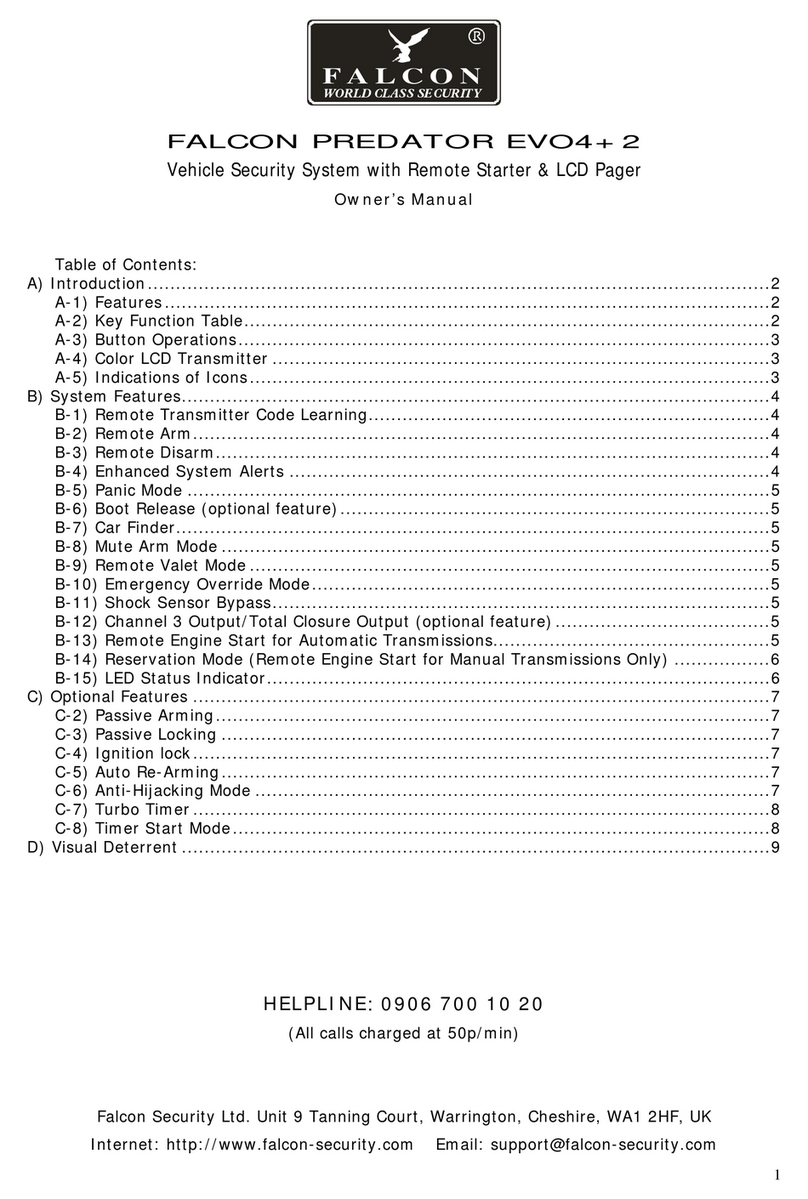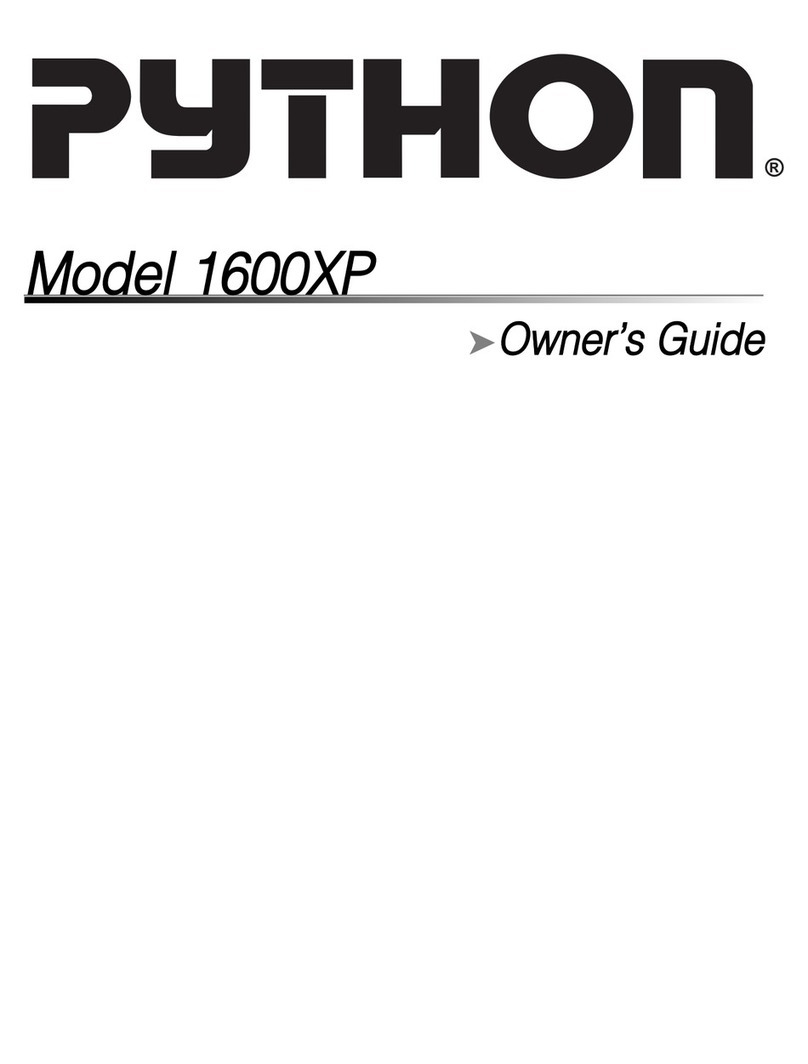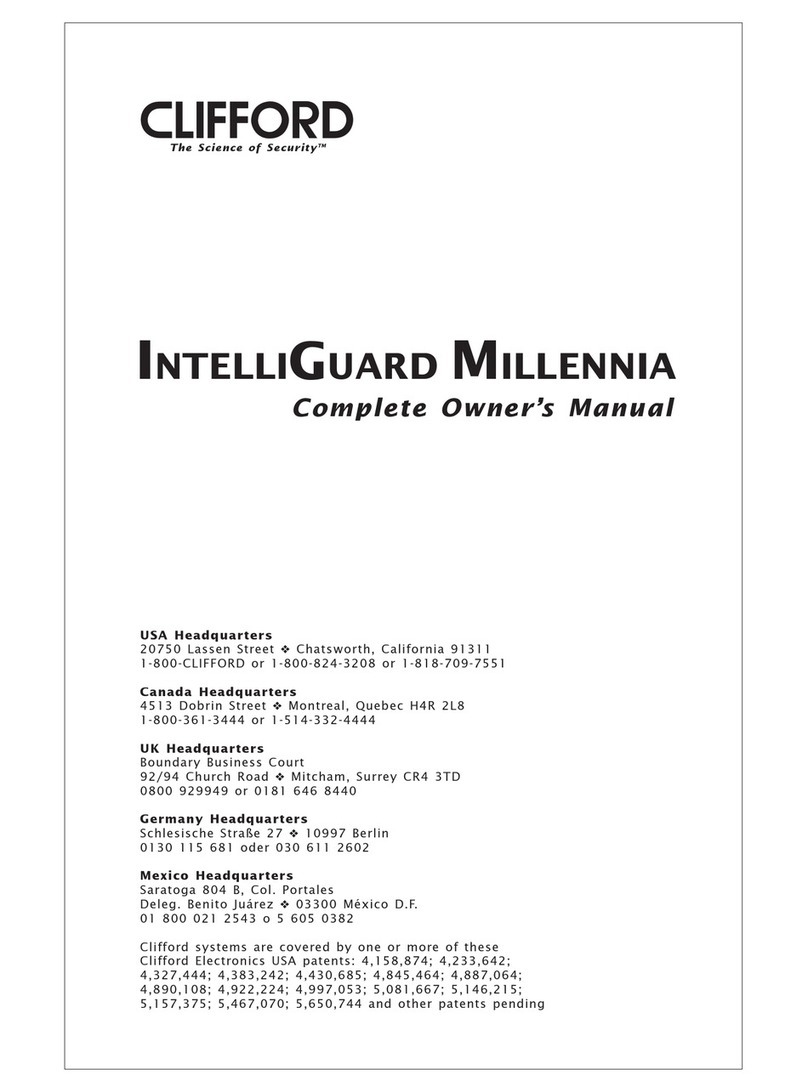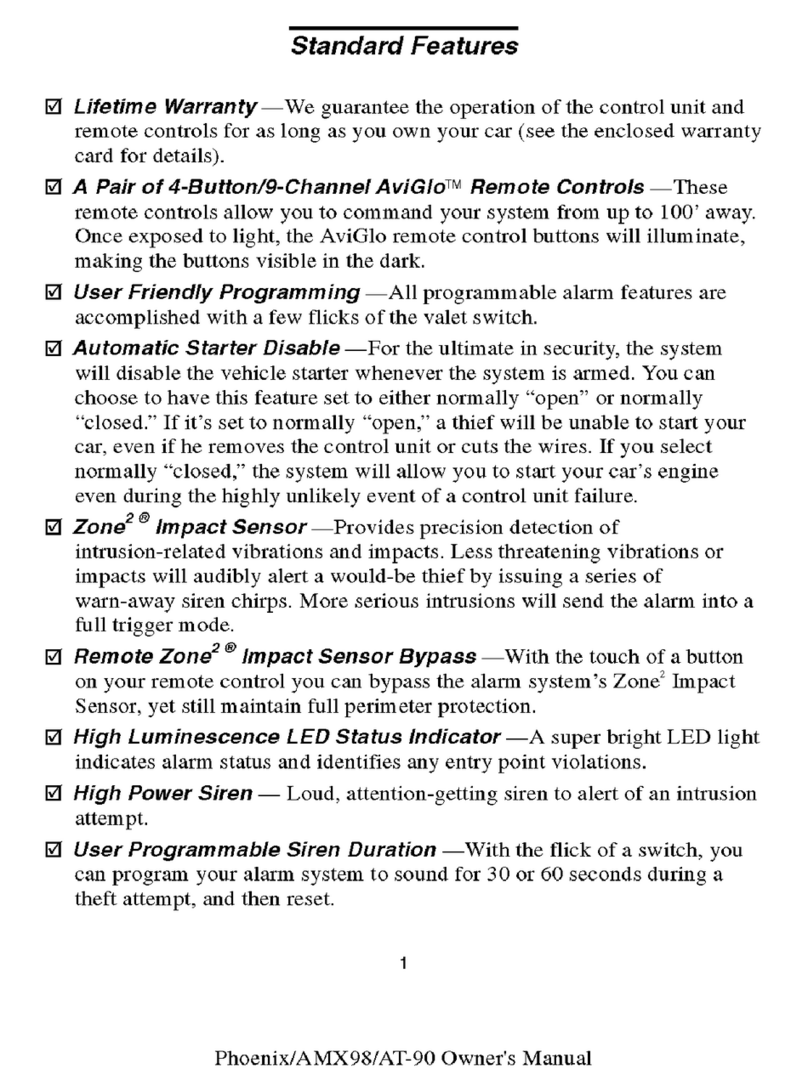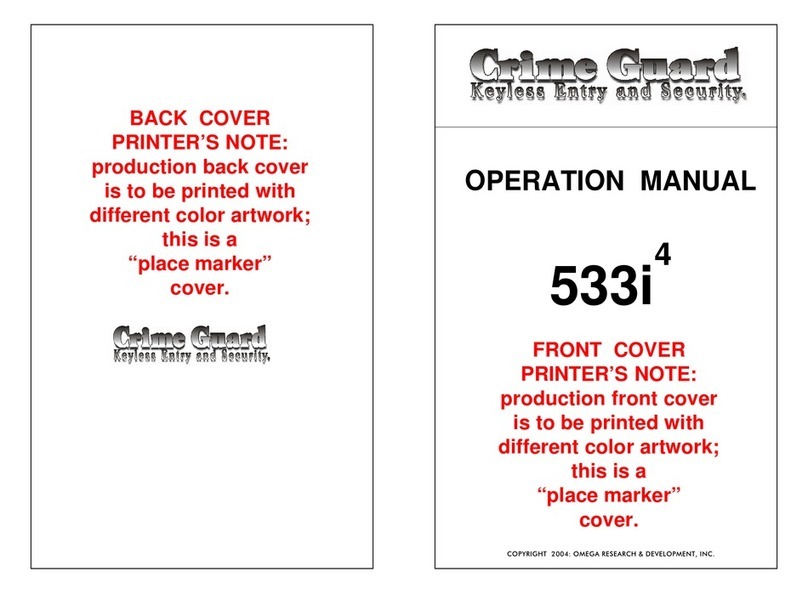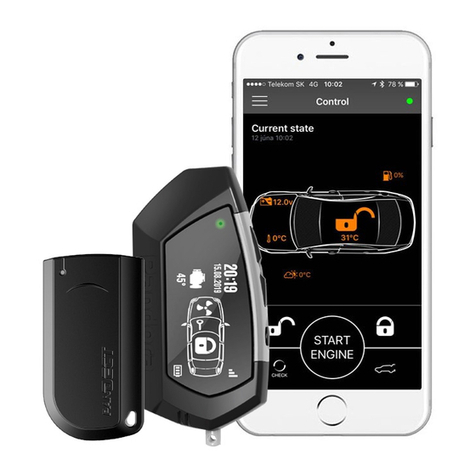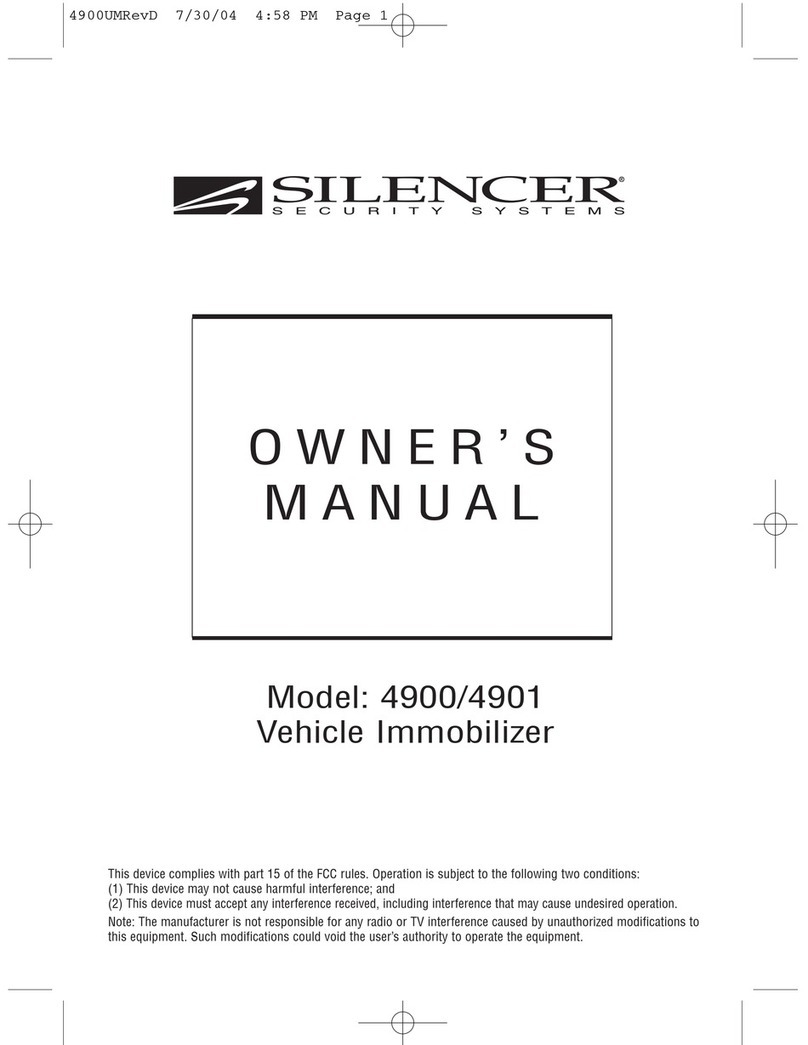Spencer BLUE SPLINT User manual

FIXO SPLINTBLUE SPLINT URRA’
RES-Q-SPLINT /
RES-Q-SPLINT PLUS
AIR SPLINT EMSOFT / EMSOFT PRO
SPENCER ITALIA SRL – Via Provinciale n° 12
43038 Sala Baganza (PR) – Italy
SK
Návod na používanie a údržbu
DLAHY A PRÍSLUŠENSTVO
RO
Manual de utilizare și întreținere
ATELE ȘI ACCESORII
HU
Használati és karbantartási kézikönyv
MEREVÍTŐK ÉS KIEGÉSZÍTŐK
EL
Εγχειρίδιο χρήσης και συντήρησης
ΝΑΡΘΗΚΕΣ KAI ΕΞΑΡΤΗΜΑΤΑ
PT
Manual de Uso e Manutenção
TALAS PARA IMOBILIZAÇÃO
DE EMERGÊNCIA E ACESSÓRIOS
ES
Manual de uso y mantenimiento
FÉRULAS Y ACCESORIOS
FR
Manuel d’utilisation et d’entretien
ATTELLES ET ACCESSOIRES
DE
Benutzungs- und Wartungshandbuch
NOTFALLSCHIENEN UND ZUBEHÖR
EN
Use and Maintenance Manual
SPLINTS AND ACCESSORIES
IT
Manuale d’uso e Manutenzione
STECCOBENDE E ACCESSORI

2
INDICE / CONTENTS / INHALTSVERZEICHNIS / SOMMAIRE / ÍNDICE
1. MODELLI 4
2. DESTINAZIONE D’USO 4
2.1 DESTINAZIONE D’USO E BENEFICI CLINICI 4
2.2 PAZIENTI DESTINATARI 4
2.3 CRITERI DI SELEZIONE PAZIENTI 4
2.4 CONTROINDICAZIONI ED EFFETTI COLLATERALI
INDESIDERATI 4
2.5 UTILIZZATORI E INSTALLATORI 4
3. STANDARD DI RIFERIMENTO 4
4. INTRODUZIONE 4
4.1 ETICHETTATURA E CONTROLLO TRACCIABILITÀ
DEL DISPOSITIVO 4
4.2 SIMBOLI 4
4.3 GARANZIA E ASSISTENZA 4
5. AVVERTENZE/PERICOLI 4
6. AVVERTENZE SPECIFICHE 5
7. RISCHIO RESIDUO 5
8. DATI TECNICI E COMPONENTI 5
9. MODALITA’ D’USO 6
10. PULIZIA E MANUTENZIONE 6
10.1 PULIZIA 6
10.2 MANUTENZIONE 6
10.3 TEMPO DI VITA 6
11. TABELLA GESTIONE GUASTI 7
12. ACCESSORI 7
13. RICAMBI 7
14. SMALTIMENTO 7
1. MODELS 8
2. INTENDED USE 8
2.1 INTENDED USE AND CLINICAL BENEFITS 8
2.2 TARGET PATIENTS 8
2.3 PATIENT SELECTION CRITERIA 8
2.4 CONTRAINDICATIONS AND UNWANTED SIDE EFFECTS 8
2.5 USERS AND INSTALLERS 8
3. REFERENCE STANDARDS 8
4. INTRODUCTION 8
4.1 DEVICE LABELLING AND TRACEABILITY 8
4.2 SIMBOLI 8
4.3 WARRANTY AND SERVICE 8
5. WARNINGS/DANGERS 8
6. SPECIFIC WARNINGS 9
7. RESIDUAL RISK 9
8. TECHNICAL DATA AND COMPONENTS 9
9. PROPER USE 10
10. CLEANING AND MAINTENANCE 10
10.1 CLEANING 10
10.2 MAINTENANCE 10
10.3 LIFE SPAN 10
11. TROUBLESHOOTING TABLE 10
12. ACCESSORIES 11
13. SPARE PARTS 11
14. DISPOSAL 11
1. MODELLE 12
2. VERWENDUNGSZWECK 12
2.1 VERWENDUNGSZWECK UND KLINISCHER NUTZEN 12
2.2 ZIELPATIENTEN 12
2.3 AUSWAHLKRITERIEN FÜR PATIENTEN 12
2.4 GEGENANZEIGEN UND UNERWÜNSCHTE
NEBENWIRKUNGEN 12
2.5 ANWENDER UND TECHNIKER 12
3. BEZUGSRICHTLINIEN 12
4. EINLEITUNG 12
4.1 TYPENSCHILDER UND RÜCKVERFOLGBARKEIT
DES PRODUKTS 12
4.2 SYMBOLE 12
4.3 GARANTIE UND KUNDENDIENST 12
5. WARNUNGEN/GEFAHREN 12
6. SPEZIFISCHE HINWEISE 13
7. RESTRISIKO 13
8. TECHNISCHE DATEN UND KOMPONENTEN 13
9. GEBRAUCHSWEISE 14
10. REINIGUNG UND WARTUNG 14
10.1 REINIGUNG 14
10.2 WARTUNG 14
10.3 LEBENSDAUER 15
11. SCHADENSTABELLE 15
12. ZUBEHÖR 15
13. ERSATZTEILE 15
14. ENTSORGUNG 15
1. MODÈLES 16
2. UTILISATION 16
2.1 UTILISATION ET BÉNÉFICES CLINIQUES 16
2.2 PATIENTS DESTINATAIRES 16
2.3 CRITÈRES DE SÉLECTION DES PATIENTS 16
2.4 CONTRE-INDICATIONS ET EFFETS COLLATÉRAUX
INDÉSIRABLES 16
2.5 UTILISATEURS ET INSTALLATEURS 16
3. STANDARD DE RÉFÉRENCE 16
4. INTRODUCTION 16
4.1 ÉTIQUETAGE ET CONTRÔLE DE LA TRAÇABILITÉ
DU DISPOSITIF 16
4.2 SYMBOLES 16
4.3 GARANTIE ET ASSISTANCE 16
5. AVERTISSEMENTS/DANGERS 16
6. AVERTISSEMENTS SPÉCIFIQUES 17
7. RISQUE RÉSIDUEL 17
8. DONNÉES TECHNIQUES ET COMPOSANTS 17
9. MODALITÉS D’UTILISATION 18
10. NETTOYAGE ET ENTRETIEN 18
10.1 NETTOYAGE 18
10.2 ENTRETIEN 18
10.3 DURÉE DE VIE 19
11. TABLEAU DE GESTION DES INCONVÉNIENTS 19
12. ACCESSOIRES 19
13. PIÈCES DÉTACHÉES 19
14. ÉLIMINATION 19
1. MODELOS 20
2. DESTINO DE USO 20
2.1 DESTINO DE USO Y BENEFICIOS CLÍNICOS 20
2.2 PACIENTES DESTINATARIOS 20
2.3 CRITERIOS DE SELECCIÓN DE LOS PACIENTES 20
2.4 CONTRAINDICACIONES Y EFECTOS COLATERALES
NO DESEADOS 20
2.5 USUARIOS E INSTALADORES 20
3. NORMAS DE REFERENCIA 20
4. INTRODUCCIÓN 20
4.1 ETIQUETADO Y CONTROL DE SEGUIMIENTO
DEL DISPOSITIVO 20
4.2 SÍMBOLOS 20
4.3 GARANTÍA Y ASISTENCIA 20
5. ADVERTENCIAS/PELIGROS 20
6. ADVERTENCIAS ESPECÍFICAS 21
7. RIESGO RESIDUAL 21
8. DATOS TÉCNICOS Y COMPONENTES 21
9. MODO DE USO 22
10. LIMPIEZA Y MANTENIMIENTO 22
10.1 LIMPIEZA 22
10.2 MANTENIMIENTO 22
10.3 TIEMPO DE VIDA ÚTIL 22
11. TABLA DE GESTIÓN DE FALLOS 23
12. ACCESORIOS 23
13. RECAMBIOS 23
14. ELIMINACIÓN 23
FR
ES
EN
DE
IT

3
SK
RO
1. MODELOS 24
2. USO PRETENDIDO 24
2.1 USO PRETENDIDO E BENEFÍCIOS CLÍNICOS 24
2.2 PACIENTES DESTINATÁRIOS 24
2.3 CRITÉRIOS DE SELEÇÃO DOS PACIENTES 24
2.4 CONTRAINDICAÇÕES E EFEITOS COLATERAIS
INDESEJADOS 24
2.5 UTILIZADORES E INSTALADORES 24
3. NORMATIVA DE REFERÊNCIA 24
4. INTRODUÇÃO 24
4.1 ETIQUETAGEM E CONTROLO DA RASTREABILIDADE
DO PRODUTO 24
4.2 SÍMBOLOS 24
4.3 GARANTIA E ASSISTÊNCIA 24
5. ADVERTÊNCIAS/PERIGOS 24
6. ADVERTÊNCIAS ESPECÍFICAS 25
7. RISCO RESIDUAL 25
8. DADOS TÉCNICOS E COMPONENTES 25
9. MODO DE UTILIZAÇÃO 26
10. LIMPEZA E MANUTENÇÃO 26
10.1 LIMPEZA 26
10.2 MANUTENÇÃO 27
10.3 VIDA ÚTIL 27
11. TABELA PARA A RESOLUÇÃO DE PROBLEMAS 27
12. ACESSÓRIOS 27
13. PEÇAS SOBRESSALENTES 27
14. ELIMINAÇÃO 27
2.1 ΠΡΟΟΡΙΣΜΟΣΧΡΗΣΗΣΚΑΙΚΛΙΝΙΚΑΟΦΕΛΗ 28
2.2 ΑΣΘΕΝΕΙΣΓΙΑΤΟΥΣΟΠΟΙΟΥΣΠΡΟΟΡΙΖΟΝΤΑΙ 28
2.3 ΚΡΙΤΗΡΙΑΕΠΙΛΟΓΗΣΑΣΘΕΝΩΝ 28
2.4 ΑΝΤΕΝΔΕΙΞΕΙΣΚΑΙΑΝΕΠΙΘΥΜΗΤΕΣΕΝΕΡΓΕΙΕΣ 28
2.5 ΧΡΗΣΤΕΣΚΑΙΕΓΚΑΤΑΣΤΑΤΕΣ 28
4.1 ΕΠΙΣΗΜΑΝΣΗΚΑΙΕΛΕΓΧΟΣΙΧΝΗΛΑΣΙΜΟΤΗΤΑΣ
ΤΟΥΒΟΗΘΗΜΑΤΟΣ 28
4.2 ΕΠΕΞΗΓΗΣΗΣΥΜΒΟΛΩΝ 28
4.3 ΕΓΓΥΗΣΗΚΑΙΕΞΥΠΗΡΕΤΗΣΗ 28
10.1 ΚΑΘΑΡΙΣΜΟΣ 30
10.2 ΣΥΝΤΗΡΗΣΗ 30
10.3 ΔΙΑΡΚΕΙΑΖΩΗΣ 31
1. MODELLEK 32
2. RENDELTETÉS 32
2.1 RENDELTETÉSÉSKLINIKAIELŐNYÖK 32
2.2 ÉRINTETT PÁCIENSEK 32
2.3 A PÁCIENSEK KIVÁLASZTÁSI KRITÉRIUMAI 32
2.4 ELLENJAVALLATOK ÉS NEM KÍVÁNT MELLÉKHATÁSOK 32
2.5 HASZNÁLÓKÉSAFELHELYEZÉSTVÉGZŐK 32
3. HIVATKOZOTT SZABVÁNYOK 32
4. BEVEZETÉS 32
4.1 AZESZKÖZCÍMKÉZÉSEÉSNYOMON
KÖVETHETŐSÉGIELLENŐRZÉSE 32
4.2 SZIMBÓLUMOK 32
4.3 GARANCIA ÉS SZERVIZ 32
5. FIGYELMEZTETÉSEK/VESZÉLYEK 32
6. SPECIÁLIS FIGYELMEZTETÉSEK 33
7. FENNMARADÓ KOCKÁZATOK 33
9. PHASZNÁLAT MÓDJA 34
10. TISZTÍTÁS E KARBANTARTÁS 34
10.1 TISZTÍTÁS 34
10.2 KARBANTARTÁS 34
10.3 ÉLETTARTAM 34
11. HIBÁK MEGOLDÁSI TÁBLÁZATA 34
13. CSERELAKATRÉSZEK 35
14. ÁRTALMATLANÍTÁS 35
1. MODELE 36
2. DOMENIUL DE UTILIZARE 36
2.1 DOMENIULDEUTILIZAREȘIBENEFICIILECLINICE 36
2.2 PACIENȚIIDESTINATARI 36
2.3 CRITERIIDESELECTAREAPACIENȚILOR 36
2.4 CONTRAINDICAȚIIȘIEFECTESECUNDARENEDORITE 36
2.5 UTILIZATORIȘIINSTALATORI 36
4. INTRODUCERE 36
4.1 ETICHETAREAȘICONTROLULTRASABILITĂȚII
DISPOZITIVULUI 36
4.2 SIMBOLURI 36
4.3 GARANȚIEȘIASISTENȚĂ 36
5. AVERTISMENTE/PERICOLE 36
6. AVERTISMENTE SPECIFICE 37
7. RRISC REZIDUAL 37
9. MOD DE UTILIZARE 38
10.1 CURĂȚAREA 38
10.2 ÎNTREȚINERE 38
10.3 DURATADEVIAȚĂ 38
12. ACCESORII 39
13. PIESE DE SCHIMB 39
14. ELIMINAREA 39
1. MODELY 40
2.1 ÚČELPOUŽITIAAZDRAVOTNÍCKEPRÍNOSY 40
2.2 PACIENTI,KTORÝMJEPOMÔCKAURČENÁ 40
2.3 KRITÉRIÁ VÝBERU PACIENTOV 40
2.4 KONTRAINDIKÁCIEANEŽIADUCEVEDĽAJŠIEÚČINKY 40
2.5 POUŽÍVATELIAAOSOBY,KTORÉDLAHUAPLIKUJÚ 40
4. ÚVOD 40
4.1 OZNAČENIEPOMÔCKYAKONTROLA
VYSLEDOVATEĽNOSTI 40
4.2 SYMBOLY 40
4.3 ZÁRUKA A SERVIS 40
8. TECHNICKÉ ÚDAJE A KOMPONENTY 41
10.1 ČISTENIE 42
10.2 ÚDRŽBA 42
10.3 ŽIVOTNOSŤ 42
13. NÁHRADNÉ DIELY 43
14. LIKVIDÁCIA 43
HU
EL
PT

4
IT
EN
DE
EL
FR
HU
ES
RO
PT
SK
1. MODELLI
I modelli base riportati di seguito possono essere soggetti a implementazioni o modifiche senza preavviso.
• BLUE SPLINT • FIXO SPLINT • URRA’ • AIR SPLINT
• RES-Q-SPLINT • RES-Q-SPLINT PLUS • EMSOFT • EMSOFT PRO
2. DESTINAZIONE D’USO
2.1 DESTINAZIONE D’USO E BENEFICI CLINICI
Le steccobende, sono dispositivi per l’immobilizzazione degli arti da utilizzarsi nei casi di sospette lesioni o fratture degli stessi, con lo scopo di evitarne l’aggravio durante le
fasi pre ospedaliere.
2.2 PAZIENTI DESTINATARI
Non sono presenti particolari indicazioni legate al gruppo di pazienti.
La conformazione del prodotto, è in grado di consentirle l’applicazione a qualunque soggetto purché la misura scelta consenta di raggiungere lo scopo previsto per il dispositivo.
2.3 CRITERI DI SELEZIONE PAZIENTI
I pazienti attesi sono tipicamente soggetti per cui risulta necessario immobilizzare un arto fratturato o lesionato.
L’utilizzo delle steccobende è controindicato in caso di corpi conficcati/penetranti.
2.4 CONTROINDICAZIONI ED EFFETTI COLLATERALI INDESIDERATI
Non sono note particolari controindicazioni o effetti collaterali derivanti dall’uso del dispositivo, purché utilizzato in accordo al manuale d’uso.
2.5 UTILIZZATORI E INSTALLATORI
Gli utilizzatori previsti, sono addetti al soccorso, con conoscenze approfondite legate all’immobilizzazione e alla movimentazione di soggetti con fratture o sospette tali.
I dispositivi non sono destinati ad utilizzatori profani.
Gli operatori devono essere in grado di fornire la necessaria assistenza al paziente.
Il prodotto deve essere utilizzato solamente da personale addestrato all’utilizzo di questo prodotto e non di altri analoghi.
3. STANDARD DI RIFERIMENTO
RIFERIMENTO TITOLO DEL DOCUMENTO
Regolamento UE 2017/745 Regolamento UE relativo ai Dispositivi Medici
4. INTRODUZIONE
4.1 ETICHETTATURA E CONTROLLO TRACCIABILITÀ DEL DISPOSITIVO
Ogni dispositivo viene dotato di un’etichetta, posizionata sul dispositivo stesso e/o sulla confezione, nella quale sono presenti i dati identificativi del Fabbricante, del prodotto,
marcatura CE, numero di matricola (SN) o lotto (LOT). Questa non deve essere mai rimossa o coperta.
Qualora non si riesca a risalire al lotto/SN assegnato è necessario effettuare il ricondizionamento del dispositivo, previsto solo sotto la responsabilità del fabbricante.
4.2 SIMBOLI
Simbolo Significato Simbolo Significato
Dispositivo conforme al Regolamento UE 2017/745
Pericolo – Indica una situazione di pericolo che può comportare una
situazione direttamente connessa a lesioni gravi o letali
Dispositivo medico Consultare il manuale d’uso
Fabbricante Numero di lotto
Data di fabbricazione Codice del prodotto
Unique Device Identifier
4.3 GARANZIA E ASSISTENZA
Spencer Italia S.r.l. garantisce che i prodotti sono senza difetti per un periodo di un anno a partire dalla data dell’acquisto.
Assistenza Clienti Spencer tel. +39 0521 541154, fax +39 0521 541222, e-mail service@spencer.it.
Condizioni di garanzia e assistenza sono disponibili al sito http://support.spencer.it.
5. AVVERTENZE/PERICOLI
Funzionalità prodotto
È vietato l’impiego del prodotto per qualsiasi altro utilizzo diverso da quello descritto nel Manuale d’Uso.
• Il prodotto non deve subire alcuna manomissione e modifica senza l’autorizzazione del fabbricante
• Evitare il contatto con oggetti taglienti o abrasivi.
• Temperatura di utilizzo: da -5°C a + 50°C
• Temperatura di stoccaggio: da -10°C a +60°C
Avvertenze generali per dispositivi medici
• Non utilizzare se il dispositivo o sue parti sono forate, strappate, sfilacciate o eccessivamente usurate.
• Non alterare o modificare arbitrariamente il dispositivo la modifica potrebbe provocarne il funzionamento imprevedibile e danni al paziente o ai soccorritori e comunque la
perdita della garanzia e sollevando il Fabbricante da qualsiasi responsabilità.
• Partecipare al controllo di sicurezza del prodotto immesso sul mercato, trasmettendo le informazioni concernenti i rischi del prodotto al Fabbricante nonché alle Autorità
Competenti per le azioni di rispettiva competenza.
In riferimento al Regolamento UE 2017/745, si ricorda che gli operatori pubblici o privati, che nell’esercizio della loro attività rilevano un incidente che coinvolga un prodotto
medico sono tenuti a darne comunicazione al Ministero della salute, nei termini e con le modalità stabilite con uno o più decreti ministeriali, e al Fabbricante. Gli operatori

5
IT
EN
DE
EL
FR
HU
ES
RO
PT
SK
sanitari pubblici o privati sono tenuti a comunicare al Fabbricante, ogni altro inconveniente che possa consentire l’adozione delle misure atte a garantire la protezione e la
salute dei pazienti e degli utilizzatori.
6. AVVERTENZE SPECIFICHE
Per l’utilizzo delle steccobende, è necessario anche aver letto, compreso e seguire accuratamente tutte le indicazioni presenti nel manuale d’uso.
• Effettuare delle simulazioni di immobilizzazione con manichini, prima della messa in servizio del dispositivo.
• L’utilizzo improprio, può causare lesioni o invalidità permanente. Seguire sempre le procedure e i protocolli approvati dal servizio medico d’emergenza competente.
• Per preservare la vita del dispositivo è necessario proteggerlo il più possibile dai raggi UV e dalle condizioni meteo avverse.
• Nel caso di ravvisato malfunzionamento del prodotto, utilizzare immediatamente un dispositivo analogo, per garantire la continuità delle operazioni in corso. Il dispositivo
non conforme deve essere messo fuori uso.
• Durante l’utilizzo del dispositivo deve essere garantita l’assistenza di personale qualificato.
• La steccobenda deve essere applicata da almeno due soccorritori addestrati, dotati di buona manualità e buon senso.
• Prima di sagomare la steccobenda valutare l’applicazione in funzione della visibilità di eventuali ferite o del punto di frattura.
• Il dispositivo non deve essere esposto e tanto meno venire in contatto con fonti termiche di combustione ed agenti infiammabili.
• Utilizzare il dispositivo solamente come descritto nel presente manuale.
• Verificare sempre l’integrità di tutte le parti prima dell’utilizzo.
• Gli operatori devono essere in grado di valutare i traumi riportati dal paziente decidendo se l’utilizzo della steccobenda sia adeguato
• Gli operatori devono essere in grado di valutare il tipo e la misura di steccobenda più idonea all’utilizzo, considerando la tipologia di paziente e le caratteristiche della frattura.
• Nel caso di utilizzo di pompe non fornite da Spencer, è necessario assicurarsi che la pompa in uso sia idonea a garantire l’immobilizzazione corretta dell’arto. L’utilizzo di
pompe non idonee, può impedire che la steccobenda offra le prestazioni previste. E’ necessario verificare l’idoneità di tale componente, prima della messa in servizio del
dispositivo.
7. RISCHIO RESIDUO
Non sono identificati rischi residui, ovvero rischi che si potrebbero originare nonostante il rispetto di tutte le avvertenze del presente manuale d’uso.
8. DATI TECNICI E COMPONENTI
BLUE SPLINT (Semirigida) EMSOFT (A depressione)
1
Anima flessibile
Realizzata in alluminio, permette di
modellare la steccobenda in base alle
necessità.
1
Corpo steccobenda
Realizzata PVC, è riempita di piccole sfere
di polistirolo
2
Corpo steccobenda
Realizzata poliuretano, serve ad
avvolgere l’arto 2
Valvola
Realizzata PVC, permette di deprimere la
steccobenda e di rilasciare la depressione
una volta terminato l’utilizzo.
3
Fasce di chiusura
Dotate di elementi strap, permettono
di applicare la steccobenda,
solidarizzandola all’arto del paziente
3
Fasce di chiusura
Dotate di elementi strap, permettono
di applicare la steccobenda,
solidarizzandola all’arto del paziente
AIR SPLINT (Gonfiabile)
1
Corpo steccobenda
Realizzata con un’ anima in poliuretao
rivestita di PVC
1
Valvola steccobenda
In PVC, consente il gonfiaggio della
steccobenda
2
Fasce di chiusura
Dotate di elementi strap, permettono
di applicare la steccobenda,
solidarizzandola all’arto del paziente
2
Corpo steccobenda
Realizzata in PVC , gonfiandosi si
irrigidisce attorno all’arto del paziente
Res-q-splint/Res-q-splint pro (A depressione) Urrà (Semirigida)
1
Corpo steccobenda
Realizzata PVC, è riempita di piccole sfere
di polistirolo
1
Corpo steccobenda
Realizzata con un’ anima di alluminio
rivestita di XPE
2
Valvola
Realizzata in alluminio, permette di
deprimere la steccobenda e di rilasciare
la depressione una volta terminato
l’utilizzo.
3
Fasce di chiusura
Dotate di elementi strap, permettono
di applicare la steccobenda,
solidarizzandola all’arto del paziente
Blue splint
Caratteristiche Gamba Braccio Avambraccio Polso Gomito caviglia
Dim. (mm) 580x450 590x280 390x300 310x240 540x280
Peso (g) 360 300 206 145 273

6
IT
EN
DE
EL
FR
HU
ES
RO
PT
SK
EMSoft
Caratteristiche S M L
Dim. (mm) 750x600 900x700 1100x800
Peso (g) 585 830 1130
Dimensioni soggette a tolleranze di ± 10 mm.
9. MODALITA’ D’USO
Gli operatori che effettuano l’immobilizzazione, devono essere in grado di selezionare la tipologia di steccobenda oltre che la misura pià adeguata della stessa.
Prima e dopo l’applicazione della steccobenda, è necessario verificare l’irrorazione dell’arto da immobilizzare.
Applicazione steccobende rigide (Blue Splint , Fixo Splint, Urrà)
• Selezionare la misura più idonea in relazione alle caratteristice dell’arto da immobilizzare.
• Modellare la steccobenda in modo da conferirle la forma più adeguata (solo Blue Splint).
• Applicare la stecobenda delicatamente all’arto.
• Chiudere le fasce strap verificando di non compromettere i tessuti dell’arto fratturato. Urrà devono essere chiuse con bende di garza.
Applicazione steccobende gonfiabili (Air Splint)
• Selezionare la misura più idonea in relazione alle caratteristice dell’arto da immobilizzare.
• Aprire la cerniera della steccobenda
• Alzare delicatamente l’arto facendo scorrere la steccobenda aperta sotto l’arto stesso.
• Chiudere la cerniera della steccobenda e gonfiarla attraverso il beccuccio della valvola, assicurandosi che la compressione generata dalla steccobenda non comprometta i
tessuti. Per il gonfiaggio è preferibile utilizzare la pompa QMX109.
• Chiudere l’apertura della valvola
• Controllare le pulsazioni e il pallore, movimento e sensibilità al di sotto della zona di applicazione in quanto la compressione potrebbe causare ridotta irrorazione dei tessuti.
Applicazione steccobende a depressione (Res-Q-Splint, Res-Q-Splint Plus, EMSoft)
• Selezionare la misura più idonea in relazione alle caratteristice dell’arto da immobilizzare.
• Stendere la steccobenda a terra ed distribuire in modo uniforme il materiale di riempimento.
• Alzare delicatamente l’arto facendo scorrere la steccobenda aperta sotto l’arto stesso.
• Avvolgere delicatamente la steccobenda attorno all’arto e chiuderne le fasce strap
• Collegare la pompa di aspirazione alla valvola, ed iniziare a deprimere mantenendo l’aderenza del dispositivo all’arto. In EMSoft, per il collegamento tra steccobenda e
pompa, utilizzare il raccordo conico fornito con la steccobenda stessa. Una volta raggiunta la rigidità necessaria, chiudere la valvola e adattare la lunghezza delle fasce di
chiusura, se necessario.
Una volta terminato l’utilizzo, riportare il dispositivo alla pressione atmosferica, aprendo la valvola.
Per EMSoft, richiudere il tappo di protezione
Le steccobende Res-Q-Splint ed EMSoft sono compatibili con le pompe QMX109, QMX120, QMX125,QMX130.
EMSoft, richiede l’utilizzo di raccordo conico fornito con la steccobenda stessa.
10. PULIZIA E MANUTENZIONE
10.1 PULIZIA
La mancata esecuzione delle operazioni di pulizia può comportare il rischio di infezioni crociate dovute alla presenza di secreti e/o residui.
Durante tutte le operazioni di controllo e igienizzazione l’operatore deve indossare adeguati dispositivi di protezione individuali, quali guanti, occhiali etc.
Lavare le parti esposte con acqua tiepida e sapone neutro; non usare mai solventi o smacchianti.
Risciacquare accuratamente con acqua tiepida verificando di avere eliminato ogni traccia di detergente, che potrebbe deteriorarla o comprometterne l’integrità e la durata.
L’uso di acqua ad alta pressione deve essere evitato.
Lasciare asciugare perfettamente prima di riporla. L’asciugatura dopo il lavaggio oppure dopo l’utilizzo in ambiente umido deve essere naturale e non forzata; non utilizzare
fiamme o altre fonti di calore diretto.
In presenza di sangue, ossidarlo prima di procedere al lavaggio con acqua.
Blue splint, può essere lavata in lavatrice a 40°C, previa rimozione dell’anima metallica.
Nel caso di eventuale disinfezione utilizzare prodotti che, oltre ad essere classificati come presidi medico-chirurgici, non abbiano azione solvente o corrosiva su materiali
costituenti il dispositivo. Assicurarsi di aver preso tutte le precauzioni idonee a garantire che non sussistano rischi di infezioni crociate o contaminazioni di pazienti e operatori.
10.2 MANUTENZIONE
Il dispositivo non richiede un programma di manutenzione ordinaria, ma è necessario effettuare controlli intesi a verificare:
• Funzionalità generale del dispositivo
• Stato di pulizia del dispositivo (si ricorda che la mancata esecuzione delle operazioni di pulizia può comportare il rischio di infezioni crociate)
• Soddisfacimento dei requisiti previsti dal manuale d’uso nella sezione Avvertenze e Avvertenze specifiche
• Soddisfacimento dei requisiti previsti dal manuale nella sezione Modalità d’uso.
Non è prevista una revisione periodica per il dispositivo.
10.3 TEMPO DI VITA
Il dispositivo, se utilizzato come riportato nelle seguenti istruzioni, ha un tempo di vita di 5 anni dalla data di acquisto.
Fixo splint
Caratteristiche S L
Dim. (mm) 120x220x310 120x230x500 150x230x730
Peso (g) 410 640 870
URRA’
Caratteristiche S M L
Dim. (mm) 22x11x0,5 46x11x0,5 91x11x0,5
Peso (g) 43 82 145
Res-q-splint
Caratteristiche S M L
Dim. (mm) 560x460 490X380X700 750x540x900
Peso (g) 295 ± 50 630 ± 50 1050 ± 50
Res-q-Splint Plus
Caratteristiche S M L
Dim. (mm) 735x640 1100x695 ± 1300x720 ±
Peso (g) 600 ± 10 850 ± 10 1050 ± 10

7
IT
EN
DE
EL
FR
HU
ES
RO
PT
SK
Avvertenza
Le informazioni contenute in questo documento sono soggette a modifica senza preavviso e sono da intendersi come impegno da parte della Spencer Italia S.r.l. con riserva di
modifiche. Le immagini sono inserite a titolo di esempio e possono variare da quelle vere e proprie del dispositivo.
© Copyright Spencer Italia S.r.l.
Tutti i diritti sono riservati. Nessuna parte del documento può essere fotocopiata, riprodotta o tradotta in un’altra lingua senza previo consenso scritto della Spencer Italia S.r.l.
11. TABELLA GESTIONE GUASTI
PROBLEMA CAUSA RIMEDIO
Non è possibile collegare la pompa
alla steccobenda
Perdita di un raccordo o
utilizzo improprio Verificare che la tipologia di pompa sia adatta al dispositivo in uso
Il tessuto o le cinghie sono lacerate Normale usura o uso
improprio Mettere immediatamente il dispositivo fuori servizio e contattare il fabbricante
Non è possibile aggangiare una o più
fibbie o fasce strap
Possibile orientamento
errato della fibbia o guasto
della stessa.
Verificare il corretto orientamento della fibbia e la sua integrità. Qualora fosse danneggiata,
mettere immediatamente il dispositivo fuori servizio e contattare il fabbricante
Fasce strap sporche Verificare los tato di pulizia degli elementi strap
Nel caso il problema o guasto rilevato non corrisponda a quanto sopra indicato contattare il servizio assistenza Spencer Italia srl.
12. ACCESSORI
QM22199 QMX 199 - KIT RIPARAZIONE SISTEMI A DEPRESSIONE JM90004 ASTUCCIO PER STECCOBENDE URRA’
JM80008 BLUE SPLINT - SACCA PER STECCOBENDE C/SERIGRAFIA QC70100 FIXO SPLINT - SACCA DI TRASPORTO IN PVC GIALLO
QS24201 ECO AIR SPLINT - SACCA TRASP NYLON S/SCOMPARTI QM22541 RES-Q-SPLINT - SACCA TRASPORTO PVC SALDATO GIALLO
QM22704 RACCORDO PER EMSOFT QS24102 AIR SPLINT - SACCA TRASPORTO NYLON C/SCOMPARTI
13. RICAMBI
RIQM004 RES Q SPLINT/RQS PLUS - VALVOLA DI RICAMBIO RIQM009 QMX120 – POMPA VUOTO IN ALLUMINIO
RIQM006 EMSOFT - TAPPINI DI RICAMBIO VALVOLA STECC. (5pz.) RIQM010 QMX125 – POMPA DOPPIO EFFETTO ALLUMINIO
RIQM008 QMX109 – POMPA IN ABS DOPPIO EFFETTO RIQM011 QMX130 – POMPA PER STECCOBENDE A DEPRESSIONE
14. SMALTIMENTO
Una volta inutilizzabili i dispositivi, ed i loro accessori, qualora non siano stati contaminati da agenti particolari, possono essere smaltiti come normali rifiuti solidi urbani,
altrimenti attenersi alle norme vigenti in materia di smaltimento.

8
IT
EN
DE
EL
FR
HU
ES
RO
PT
SK
1. MODELS
The following basic models may be subject to implementation or change without notice.
• BLUE SPLINT • FIXO SPLINT • URRA’ • AIR SPLINT
• RES-Q-SPLINT • RES-Q-SPLINT PLUS • EMSOFT • EMSOFT PRO
2. INTENDED USE
2.1 INTENDED USE AND CLINICAL BENEFITS
Splints are devices used to immobilise limbs in the event of suspected injuries or fractures of the limbs, to avoid additional strain during the pre-hospital phase.
2.2 TARGET PATIENTS
There are no particular indications related to the patient group.
The design of the product allows it to be applied to any subject as long as the chosen size achieves the intended purpose of the device.
2.3 PATIENT SELECTION CRITERIA
The intended patients are typically those for whom it is necessary to immobilise a fractured or injured limb.
The use of the splints is not recommended in cases of embedded/penetrating bodies.
2.4 CONTRAINDICATIONS AND UNWANTED SIDE EFFECTS
No particular contraindications or side effects are known with relation to use of the device, as long as it is used in accordance with the user manual.
2.5 USERS AND INSTALLERS
The intended users are rescue workers with in-depth knowledge related to the immobilisation and handling of individuals with fractures or suspected fractures.
These devices are not intended for lay people.
Operators must be able to provide the necessary patient care.
The product must be used only by personnel trained in the use of this product and not on other similar products.
3. REFERENCE STANDARDS
REFERENCE DOCUMENT TITLE
EU Regulation 2017/745 EU Regulation on Medical Devices
4. INTRODUCTION
4.1 DEVICE LABELLING AND TRACEABILITY
Each device is provided with a label, placed on the device itself and/or on the packaging, which contains the Manufacturer’s identification data, product, CE marking, serial
number (SN) or lot number (LOT). This must never be removed or covered.
If the assigned Lot/SN cannot be traced, the device must be reconditioned, provided only under the responsibility of the manufacturer.
4.2 SIMBOLI
Symbol Meaning Symbol Meaning
Device in compliance with EU Regulation 2017/745
Danger – Indicates a hazardous situation that may result in a situation
directly related to serious injury or death
Medical device See the user manual
Manufacturer Lot number
Date of manufacture Product code
Unique Device Identifier
4.3 WARRANTY AND SERVICE
Spencer Italia S.r.l. guarantees that products are free from defects for a period of one year from the date of purchase.
Spencer Customer Service tel. +39 0521 541154, fax +39 0521 541222, e-mail service@spencer.it.
Warranty and service conditions are available on the website http://support.spencer.it.
5. WARNINGS/DANGERS
Product features
Use of the product for any purpose other than that described in the User Manual is prohibited.
• The product must not be tampered with or modified without the manufacturer’s authorisation.
• Avoid contact with sharp or abrasive objects.
• Operating temperature: from -5°C to + 50°C.
• Storage temperature: -10°C to +60°C.
General warnings for medical devices
• Do not use if the device or parts of it are punctured, torn, frayed, or excessively worn.
• Do not alter or modify the device arbitrarily, as doing so could result in unpredictable operation and damage to the patient or rescuers and shall void the manufacturer’s
warranty and release the manufacturer from all liability.
• Participate in safety checks on products placed on the market, transmitting information regarding product risks to the Manufacturer as well as to the Competent Authorities
for their respective actions.
With reference to EU Regulation 2017/745, please note that public or private operators who, when exercising their activity, detect an incident involving a medical product are
required to notify the Ministry of Health, within the terms and in the manner established by one or more ministerial decrees, and notify the Manufacturer. Public or private
health care professionals are required to notify the Manufacturer of any other incident that may allow the adoption of measures to ensure the protection and health of
patients and users.

9
IT
EN
DE
EL
FR
HU
ES
RO
PT
SK
6. SPECIFIC WARNINGS
To use the splints, you must also have read, understood and carefully follow all the instructions in the user manual.
• Perform immobilisation simulations with dummies before putting the device into service.
• Improper use may result in injury or permanent disability. Always follow the procedures and protocols approved by the relevant Emergency Medical Service.
• To preserve the life of the device, protect it as much as possible from UV rays and adverse weather conditions.
• If the product is found to be malfunctioning, immediately use a similar device to ensure continuity of ongoing operations. Non-compliant devices must be taken out of
service.
• Qualified personnel must be present during use of the device.
• The splint must be applied by at least two trained responders with good dexterity and common sense.
• Before shaping the splint, evaluate the application according to the visibility of any wounds or the fracture site..
• The device must not be exposed, much less come into contact with thermal sources of combustion or flammable agents.
• Only use the device as described in this manual.
• Always check the conditions of all parts before use.
• Operators must be able to assess the patient’s injuries and decide whether the use of the splint is appropriate.
• Professionals must be able to assess the most appropriate type and size of splint to use, considering the type of patient and the characteristics of the fracture.
• If pumps not supplied by Spencer are used, it is necessary to ensure that the pump being used is suitable for the correct immobilisation of the limb. The use of unsuitable
pumps may prevent the splint from achieving its intended results. The suitability of this part must be checked before using the device.
7. RESIDUAL RISK
No residual risks are identified, i.e. risks that could arise despite compliance with all the warnings in this user manual.
8. TECHNICAL DATA AND COMPONENTS
BLUE SPLINT (Semi-rigid) EMSOFT (Vacuum)
1
Flexible core
Made of aluminium, it allows the splint
to be shaped as required.
1
Splint body
Made of PVC, it is filled with small
polystyrene balls
2
Splint body
Made of polyurethane, it wraps around
the limb. 2
Valve
Made of PVC, allows the splint to be
depressurised and released once use
is complete.
3
Closing phase Equipped with strap
elements, they allow the splint to be
applied to the patient’s limb. 3
Closing phase
Equipped with strap elements, they
allow the splint to be applied to the
patient’s limb.
AIR SPLINT (Inflatable)
1
Splint body
Made with a PVC-coated polyurea core 1
Splint valve
Made of PVC, allows the splint to be
inflated
2
Closing phase
Equipped with strap elements, they
allow the splint to be applied to the
patient’s limb.
2
Splint body
Made of PVC, it stiffens around the
patient’s limb as it inflates.
Res-q-splint/Res-q-splint pro (Vacuum) Urrà (Semi-rigid)
1
Splint body
Made of PVC, it is filled with small
polystyrene balls
1
Splint body
Made with an aluminium core coated
with XPE
2
Valve
Made of aluminium, allows the splint to
be depressurised and released once use
is complete.
3
Closing phase
Equipped with strap elements, they
allow the splint to be applied to the
patient’s limb.
Blue splint
Characteristics Leg Arm Forearm Wrist Elbow-ankle
Size (mm) 580x450 590x280 390x300 310x240 540x280
Weight (grams) 360 300 206 145 273
Fixo splint
Characteristics S L
Size (mm) 120x220x310 120x230x500 150x230x730
Weight (grams) 410 640 870
URRA’
Characteristics S M L
Size (mm) 22x11x0,5 46x11x0,5 91x11x0,5
Weight (grams) 43 82 145

10
IT
EN
DE
EL
FR
HU
ES
RO
PT
SK
EMSoft
Characteristics S M L
Size (mm) 750x600 900x700 1100x800
Weight (grams) 585 830 1130
Sizes subject to ± 10 mm tolerances.
9. PROPER USE
Operators performing immobilisation must be able to select the most suitable type of splint and the most appropriate splint size.
Before and after the application of the splint, it is necessary to check the circulation of the limb to be immobilised.
Applying rigid splints (Blue Splint , Fixo Splint, Urrà)
• Select the most suitable size according to the characteristics of the limb to be immobilised.
• Shape the splint to give it the most suitable shape (only Blue Splint).
• Apply the splint gently to the limb.
• Close the strap bands, ensuring that the tissues of the fractured limb are not disturbed. Urrà must be closed with gauze bandages.
Application of inflatable splints (Air splint)
• Select the most suitable size according to the characteristics of the limb to be immobilised.
• Unzip the splint
• Gently raise the limb and slide the open splint under the limb.
• Zip up the splint and inflate it with the valve nozzle, ensuring that the compression generated by the splint does not harm the tissue. Preferably use the QMX109 pump for
inflation.
• Close the valve opening
• Check pulse and paleness, movement and sensitivity below the area of application as compression may cause reduced tissue circulation.
Application of vacuum splints (Res-Q-Splint, Res-Q-Splint Plus, EMSoft)
• Select the most suitable size according to the characteristics of the limb to be immobilised.
• Lay the splint on the ground and distribute the filling material evenly.
• Gently raise the limb and slide the open splint under the limb.
• Gently wrap the splint around the limb and close the strap bands
• Connect the suction pump to the valve, and begin depressurising while keeping the device adherent to the limb. With EMSoft, use the conical fitting supplied with the splint
to connect the splint to the pump. Once the required rigidity has been achieved, close the valve and adjust the length of the closing straps if necessary.
After use, return the device to atmospheric pressure by opening the valve.
With EMSoft, close the protective cap
Res-Q-Splint and EMSoft splints are compatible with QMX109, QMX120, QMX125,QMX130 pumps.
EMSoft, requires the use of the conical fitting supplied with the splint.
10. CLEANING AND MAINTENANCE
10.1 CLEANING
Failure to carry out the correct cleaning operations could increase the risk of cross-infection due to presence of body fluids and/or residues.
The operator must wear suitable personal protective equipment, such as gloves, goggles, etc. during all checking and cleaning operations.
Clean the exposed parts with water and delicate soap. Never use solvents or stain removers.
Rinse thoroughly with lukewarm water, making sure you have removed all traces of detergent, which may deteriorate or compromise conditions and durability. The use of
high-pressure water should be avoided.
Allow to dry thoroughly before storing. Drying after washing or after use in a wet environment must be natural and not forced. Do not use flames or other direct heat sources.
If blood is visible, oxidise it before washing with water.
Blue splint can be machine washed at 40°C, after removal of the metal core.
If disinfecting, use products that do not have a solvent or corrosive action on materials constituting the device, in addition to being classified as medical-surgical devices. Be
sure to take all precautions to ensure that there is no risk of cross-infection or contamination of patients and operators.
10.2 MAINTENANCE
The device does not require a routine maintenance program, but checks must be made to verify:
• General functionality of the device
• Cleanliness of the device (remember that the failure of cleaning may cause the risk of cross infections)
• Fulfilment of the requirements of the user manual in section Warnings and Specific Warnings.
• Fulfilment of the requirements of the manual in section on Proper use.
No periodic overhaul is foreseen for the device.
10.3 LIFE SPAN
The device, if used as described in the following instructions, has a life span of 5 years from the date of purchase.
11. TROUBLESHOOTING TABLE
PROBLEM CAUSE REMEDY
The pump cannot be connected to
the splint
Loss of a fitting or improper
use Check that the pump type is suitable for the device in use
Fabric or belts are torn Normal wear or improper
use. Immediately remove the device from service and contact the manufacturer
Res-q-splint
Characteristics S M L
Size (mm) 560x460 490X380X700 750x540x900
Weight (grams) 295 ± 50 630 ± 50 1050 ± 50
Res-q-Splint Plus
Characteristics S M L
Size (mm) 735x640 1100x695 ± 1300x720 ±
Weight (grams) 600 ± 10 850 ± 10 1050 ± 10

11
IT
EN
DE
EL
FR
HU
ES
RO
PT
SK
Warning
The information contained in this document is subject to change without notice and is to be intended as a commitment by Spencer Italia S.r.l. subject to change.
The images are included as examples and may vary slightly from the actual device.
© Copyright Spencer Italia S.r.l.
All rights reserved. No part of the document may be photocopied, reproduced or translated into another language without prior written consent from Spencer Italia S.r.l.
It is not possible to attach one or
more buckles or straps.
Possible incorrect buckle
orientation or buckle failure.
Check the correct orientation of the buckle and its conditions. If damaged, immediately remove
the device from service and contact the manufacturer
Dirty straps Check the cleanliness of the strap elements
If a problem or fault is detected that does not correspond to the above, please contact Spencer Italia srl customer care service.
12. ACCESSORIES
QM22199 QMX 199 - VACUUM SYSTEM REPAIR KIT JM90004 URRA’ SPLINT CASE
JM80008 BLUE SPLINT - SPLINT BAG WITH SILKSCREEN PRINTING QC70100 FIXO SPLINT - YELLOW PVC CARRY BAG
QS24201 ECO AIR SPLINT - NYLON CARRY BAG WITHOUT POCKETS QM22541 RES-Q-SPLINT - YELLOW WELDED PVC CARRY BAG
QM22704 EMSOFT CONNECTOR QS24102 AIR SPLINT - NYLON CARRY BAG WITH POCKETS
13. SPARE PARTS
RIQM004 RES Q SPLINT/RQS PLUS - SPARE VALVE RIQM009 QMX120 – ALUMINIUM VACUUM PUMP
RIQM006 EMSOFT - SPLINT VALVE SPARE CAPS (5 pieces) RIQM010 QMX125 – ALUMINIUM DOUBLE EFFECT PUMP
RIQM008 QMX109 – DOUBLE EFFECT ABS PUMP RIQM011 QMX130 – VACUUM SPLINT PUMP
14. DISPOSAL
When devices and their accessories are no longer suitable for use, they can be disposed of as normal municipal solid waste if they have not been contaminated by special
agents. Otherwise, follow the regulations in force regarding disposal.

12
IT
EN
DE
EL
FR
HU
ES
RO
PT
SK
1. MODELLE
Die nachfolgenden Basismodelle können ohne Vorankündigung ergänzt oder geändert werden.
• BLUE SPLINT • FIXO SPLINT • URRA’ • AIR SPLINT
• RES-Q-SPLINT • RES-Q-SPLINT PLUS • EMSOFT • EMSOFT PRO
2. VERWENDUNGSZWECK
2.1 VERWENDUNGSZWECK UND KLINISCHER NUTZEN
Die Notfallschienen sind Vorrichtungen zur Immobilisierung der Gliedmaßen, die bei Verdacht auf schweren Verletzungen oder Frakturen derselben verwendet werden, um
eine Verschlechterung während der prähospitalen Phasen zu vermeiden.
2.2 ZIELPATIENTEN
Es bestehen keine besonderen Indikationen für bestimmte Patientengruppen.
Die Form des Produkts ermöglicht die Anwendung an jedem beliebigen Patienten, solange die gewählte Größe den vorgesehenen Zweck des Geräts ermöglicht.
2.3 AUSWAHLKRITERIEN FÜR PATIENTEN
Bei den Zielpatienten handelt es sich typischerweise um Personen, bei denen eine Immobilisierung einer gebrochenen oder verletzten Gliedmaße erforderlich ist.
Bei eingerammten/durchgestoßenen Fremdkörpern ist der Gebrauch von Notfallschienen kontraindiziert.
2.4 GEGENANZEIGEN UND UNERWÜNSCHTE NEBENWIRKUNGEN
Es bestehen keine Gegenanzeigen oder Nebenwirkungen durch den Gebrauch des Geräts, sofern es gemäß Handbuch angewendet wird.
2.5 ANWENDER UND TECHNIKER
Die vorgesehenen Anwender sind Rettungskräfte mit fundierten Kenntnissen in Bezug auf die Immobilisierung und Bewegung von Personen mit Brüchen oder Verdacht auf
Brüchen.
Die Geräte sind nicht für unfachmännische Anwender bestimmt.
Die Rettungskräfte müssen in der Lage sein, dem Patienten im Bedarfsfall beistehen zu können.
Das Produkt darf nur von Personal angewendet werden, das im Gebrauch dieses und nicht eines anderen, ähnlichen Produkts geschult ist.
3. BEZUGSRICHTLINIEN
BEZUG TITEL DES DOKUMENTS
Verordnung EU 2017/745 EU-Verordnung zu medizinischen Geräten
4. EINLEITUNG
4.1 TYPENSCHILDER UND RÜCKVERFOLGBARKEIT DES PRODUKTS
Jedes Produkt ist mit einem Typenschild versehen, das sich am Gerät und/oder an der Verpackung befindet, auf dem die Kennzeichnungsdaten der Herstellers, des Produkts,
die CE-Kennzeichnung, die Seriennummer (SN) oder die Losnummer (LOT) angegeben ist. Dieses Schild darf niemals entfernt oder abgedeckt werden.
Falls die zugewiesene Losnummer/SN nicht mehr feststellbar ist, muss das Gerät überholt werden, wozu nur der Herstellers verantwortlich ist.
4.2 SYMBOLE
Symbol Bedeutung Symbol Bedeutung
Gerät in Übereinstimmung mit der EU-Verordnung 2017/745
Gefahr - Weist auf eine Gefahrensituation hin, die direkt zu schweren
oder tödlichen Verletzungen führen kann.
Medizinisches Gerät Im Handbuch nachsehen
Hersteller Losnummer
Herstellungsdatum Produktcode
Unique Device Identifier (Gerätekennung)
4.3 GARANTIE UND KUNDENDIENST
Spencer Italia S.r.l. garantiert, dass die Produkte für die Dauer von einem Jahr ab Kaufdatum ohne Defekte sind.
Kundendienst Spencer Tel. +39 0521 541154, Fax +39 0521 541222, E-Mail service@spencer.it.
Die Garantie- sowie Kundendienstbedingungen sind auf der Internetseite http://support.spencer.it.
5. WARNUNGEN/GEFAHREN
Gebrauchsweise des Produkts
Jeder Gebrauch des Produkts, der von dem in diesem Benutzerhandbuch beschriebenen abweicht, ist verboten.
• Das Produkt darf ohne Genehmigung des Herstellers weder verfälscht noch verändert werden
• Den Kontakt mit scharfen oder scheuernden Gegenständen vermeiden.
• Einsatztemperatur: von -5°C bis +50°C
• Lagertemperatur: von -10°C bis +60°C.
Allgemeine Hinweise zu medizinischen Geräten
• Das Gerät nicht benutzen, wenn an ihm oder Teilen von ihm Löcher, Abrisse, Ausfransungen oder übermäßiger Verschleiß bemerkt werden.
• Das Gerät nicht absichtlich verfälschen oder abändern. Die Änderung könnte ein unvorhergesehenes Nutzungsverhalten verursachen und den Patienten oder das Rettung-
spersonal schädigen und würde die Garantie verfallen lassen und den Hersteller von allen Haftungen entbinden.
• Teilnahme an der Sicherheitsprüfung des in Verkehr gebrachten Produkts, indem die Informationen zu den Produktrisiken dem Hersteller sowie den Behörden, in deren
Zuständigkeit die Handlungen liegen, übermittelt werden..
Unter Verweis auf die EU-Verordnung 2017/745 wird daran erinnert, dass öffentliche oder private Anwender, die bei Durchführung ihrer Tätigkeiten einen Unfall feststellen,
an dem ein medizinisches Produkt beteiligt ist, außer dem Hersteller innerhalb der durch ein oder mehrere Ministerialerlasse festgelegten Fristen und Modalitäten dem

13
IT
EN
DE
EL
FR
HU
ES
RO
PT
SK
Gesundheitsministerium Mitteilung machen müssen. Angestellte öffentlicher oder privater Gesundheitsdienste müssen den Hersteller über alle anderen Störungen
informieren, die es ermöglichen, Maßnahmen zum Schutz und zur Sicherstellung der Gesundheit von Patienten und Anwendern zu ergreifen.
6. SPEZIFISCHE HINWEISE
Vor der Nutzung der Notfallschienen müssen auch sorgfältig alle Angaben in diesem Benutzerhandbuch gelesen, verstanden und befolgt werden.
• Führen Sie Immobilisierungssimulationen mit Dummys durch, bevor Sie das Gerät in Betrieb nehmen.
• Unsachgemäßer Gebrauch kann zu Verletzungen oder dauerhafter Behinderung führen. Befolgen Sie immer die vom zuständigen Rettungsdienst genehmigten
Verfahren und Protokolle
• Um die Lebensdauer des Geräts zu bewahren, muss es möglichst vor UV-Strahlen und widrigen Wetterverhältnissen geschützt werden.
• Bei einem festgestellten Produktdefekt sofort ein gleichartiges Gerät benutzen, um die laufende Verwendung aufrechtzuerhalten. Das nicht mehr einsatztaugliche Gerät
muss außer Gebrauch genommen werden.
• Während des Einsatzes der Vorrichtung muss ausgebildetes Personal Hilfestellung geben.
• Die Notfallschiene muss zumindest von zwei geschulten Rettungssanitäter angelegt werden, die über eine gute Fingerfertigkeit und guten Menschenverstand verfügen.
• Bevor die Schiene geformt wird, ist deren Anwendung in Abhängigkeit eventuelle sichtbarer Verletzungen oder der Knochenbruchstelle zu beurteilen.
• Die Vorrichtung darf weder Verbrennungswärme ausgesetzt werden, noch mit brennbaren Stoffen in Berührung kommen.
• Die Vorrichtung nur so verwenden, wie in diesem Handbuch angegeben.
• Vor dem Gebrauch immer die Unversehrtheit aller Teile überprüfen.
• Die Rettungskräfte müssen in der Lage sein, die Verletzungen des Patienten zu beurteilen und zu entscheiden, ob die Verwendung der Notfallschiene angemessen ist.
• Die Rettungskräfte müssen in der Lage sein, die am besten geeignete Art und Größe der Notfallschiene für den Einsatz zu beurteilen, wobei die Art des Patienten und die
Merkmale der Fraktur berücksichtigt werden müssen.
• Wenn Pumpen verwendet werden, die nicht von Spencer sind, muss sichergestellt sein, das die benutzte Pumpe sich für eine korrekte Immobilisierung der Gliedmaße eignet.
Die Verwendung nicht geeigneter Pumpen kann dazu führen, dass die Notfallschiene ihre Leistung nicht wie vorgesehen ausführt. Die Eignung dieser Komponente muss vor
Anwendung der Vorrichtung überprüft werden.
7. RESTRISIKO
Restrisiken sind nicht gegeben, also Risiken, die sich trotz Einhaltung aller Hinweise dieses Benutzerhandbuchs ereignen könnten.
8. TECHNISCHE DATEN UND KOMPONENTEN
BLUE SPLINT (Halbstarr) EMSOFT (Mit Vakuum)
1
Alu-Polsterschiene
Aus Aluminium, wodurch die Schiene den
Anforderungen angepasst werden kann.
1
Körper Notfallschiene
Aus PVC, gefüllt mit kleinen Polystyrol-
Kügelchen
2
Körper Notfallschiene
Aus Polyurethan, dient zur Umwicklung
der Gliedmaße 2
Ventil
Aus PVC, mit ihm kann in der Schiene
ein Vakuum erzeugt werden, und nach
Gebrauchsende wieder Luft eingelassen
werden.
3
Verschlussgurte Mit Klettverschlüssen
können die Schienen fest mit der
Gliedmaße des Patienten verbunden
werden
3
Verschlussgurte
Mit Klettverschlüssen können die
Schienen fest mit der Gliedmaße des
Patienten verbunden werden
AIR SPLINT (Aufblasbar)
1
Körper Notfallschiene
Mit Schiene aus Polyurethan, die mit PVC
verkleidet ist
1
Ventile Notfallschiene
Aus PVC, durch das Ventil kann die
Notfallschiene aufgeblasen werden
2
Verschlussgurte
Mit Klettverschlüssen können die
Schienen fest mit der Gliedmaße des
Patienten verbunden werden
2
Körper Notfallschiene
Aus PVC, beim Aufblasen legt sie sich
versteifend um die Gliedmaße des
Patienten
Res-q-splint/Res-q-splint pro (Mit Vakuum) Urrà (Halbstarr)
1
Körper Notfallschiene
Aus PVC, gefüllt mit kleinen Polystyrol-
Kügelchen
1
Körper Notfallschiene
Mit Schiene aus Aluminium, die mit XPE
verkleidet ist
2
Ventil
Aus Aluminium, mit ihm kann in der
Schiene ein Vakuum erzeugt werden,
und nach Gebrauchsende wieder Luft
eingelassen werden.
3
Verschlussgurte
Mit Klettverschlüssen können die
Schienen fest mit der Gliedmaße des
Patienten verbunden werden
Blue splint
Merkmale Bein Arm Unterarm Handgelenk Ellenbogen Knöchel
Abm. (mm) 580x450 590x280 390x300 310x240 540x280
Gewicht (g) 360 300 206 145 273

14
IT
EN
DE
EL
FR
HU
ES
RO
PT
SK
EMSoft
Merkmale S M L
Abm. (mm) 750x600 900x700 1100x800
Gewicht (g) 585 830 1130
Die Abmessungen unterliegen Toleranzen von ± 10 mm.
9. GEBRAUCHSWEISE
Die Rettungskräfte, die die Immobilisierung durchführen, müssen in der Lage sein, den am besten geeigneten Typ einer Notfallschiene sowie die am besten geeignete Größe
auszuwählen.
Vor und nach der Anwendung muss die ruhigzustellende Gliedmaße auf Blutungen überprüft werden.
Anwendung von starren Notfallschienen (Blue Splint , Fixo Splint, Urrà)
• Auswahl der geeigneten Größe hinsichtlich der Eigenschaften der ruhigzustellenden Gliedmaße.
• Die Notfallschiene so verformen, dass sie die bestmögliche Form erreicht (nur Blue Splint).
• Die Schiene vorsichtig an die Gliedmaße ansetzen.
• Den Klettverschluss schließen und darauf achten, dass die Gewebe der gebrochenen Gliedmaße nicht geschädigt werden. Urrà müssen mit Mullbinden geschlossen werden.
Anwendung von aufblasbaren Notfallschienen (Air Splint)
• Auswahl der geeigneten Größe hinsichtlich der Eigenschaften der ruhigzustellenden Gliedmaße.
• Das Scharnier der Schiene öffnen
• Vorsichtig die Gliedmaße heben und die offene Notfallschienen unter die Gliedmaße schieben.
• Das Scharnier der Schiene schließen und sie über den Ventilanschluss aufblasen, dabei Acht geben, dass der von der Schiene erzeugte Pressdruck kein Gewebe verletzt. Für
das Aufblasen sollte am besten die Pumpe QMX109 benutzt werden.
• Das Ventil schließen
• Auf Puls und Blässe, Bewegung und Empfindlichkeit unter der Anwendungsstelle achten, da der Pressdruck eine verminderte Gewebedurchblutung verursachen kann.
Anwendung von Vakuum- Notfallschiene (Res-Q-Splint, Res-Q-Splint Plus, EMSoft)
• Auswahl der geeigneten Größe hinsichtlich der Eigenschaften der ruhigzustellenden Gliedmaße.
• Die Notfallschiene auf dem Boden ausbreiten und das Füllmaterial gleichmäßig auf dem Boden verteilen.
• Vorsichtig die Gliedmaße heben und die offene Notfallschienen unter die Gliedmaße schieben.
• Vorsichtig die Notfallschiene um die Gliedmaße wickelt und die Klettverschlüsse schließen
• Die Absaugpumpe an das Ventil anschließen und mit der Luftabsaugung beginnen, dabei die Vorrichtung immer an die Gliedmaße halten. In EMSoft für die Verbindung der
Schiene mit der Pumpe den konischen Anschluss benutzen, der in der Lieferung der Notfallschiene enthalten ist. Wenn die nötige Steifigkeit erreicht ist, das Ventil schließen
und die Länge der Verschlussbänder nötigenfalls anpassen.
NachdemGebrauchdurchÖffnendesVentilswiederdenatmosphärischenDruckwiederherstellen.
Für EMSoft, die Schutzkappe wieder schließen
Die Notschienen Res-Q-Splint und EMSoft können mit den Pumpen QMX109, QMX120, QMX125,QMX130 eingesetzt werden.
EMSoft benötigt den konischen Anschluss, der mit der Schiene geliefert wird.
10. REINIGUNG UND WARTUNG
10.1 REINIGUNG
Wird das Produkt nicht gereinigt besteht die Gefahr von Kreuzinfektionen durch Sekrete und/oder Rückständen.
Während aller Kontroll- und Hygienemaßnahmen muss der Bediener geeignete persönliche Schutzausrüstung wie Handschuhe, Schutzbrille usw. tragen.
Die ausgesetzten Teile mit lauwarmem Wasser und neutraler Seife waschen; niemals Lösungsmittel oder Fleckentferner verwenden.
Sorgfältig mit lauwarmem Wasser nachspülen und überprüfen, dass alle Reste des Reinigungsmittels entfernt wurden, die das Produkt verschleißen oder beschädigen und seine
Lebensdauer verringern könnte. Es darf kein unter Hochdruck stehendes Wasser benutzt werden.
Vor dem Zusammensetzung vollständig trocknen lassen. Die Trocknung nach dem Waschen oder nach dem Einsatz in feuchter Umgebung muss natürlich und nicht erzwungen
erfolgen; keine Flammen oder direkte Wärmequellen benutzen.
Blut vor dem Waschen mit Wasser oxidieren.
Blue splint kann in der Waschmaschine bei 40°C gewaschen werden, nachdem die Metallschiene vorher entfernt wurde.
Zur Desinfektion Produkte verwenden, die nicht nur als medizinische chirurgische Hilfsmittel eingestuft sind, sondern auch keine lösungsmittel- oder ätzenden Wirkungen auf
die Materialien haben, aus denen das Gerät besteht. Alle Vorsichtsmaßnahmen ergreifen, um sicherzustellen, dass kein Risiko einer Kreuzinfektion oder Kontamination von
Patienten und Einsatzkräften besteht.
10.2 WARTUNG
Das Gerät erfordert kein Programm für eine ordentliche Wartung, jedoch müssen Kontrollen vorgenommen werden, um zu überprüfen:
• Allgemeine Betriebseignung des Geräts
• Reinigungszustand des Geräts (zur Erinnerung: wird das Gerät nicht gereinigt, kann dies zur Kreuzinfektionen führen)
• Die vom Benutzerhandbuch im Abschnitt Hinweise und Spezifische Hinweise Anforderungen sind erfüllt
• Die vom Benutzerhandbuch im Abschnitt Gebrauchsweise Anforderungen sind erfüllt
Für das Gerät ist keine regelmäßige Revision vorgesehen.
Res-q-splint
Merkmale S M L
Abm. (mm) 560x460 490X380X700 750x540x900
Gewicht (g) 295 ± 50 630 ± 50 1050 ± 50
Res-q-Splint Plus
Merkmale S M L
Abm. (mm) 735x640 1100x695 ± 1300x720 ±
Gewicht (g) 600 ± 10 850 ± 10 1050 ± 10
Fixo splint
Merkmale S L
Abm. (mm) 120x220x310 120x230x500 150x230x730
Gewicht (g) 410 640 870
URRA’
Merkmale S M L
Abm. (mm) 22x11x0,5 46x11x0,5 91x11x0,5
Gewicht (g) 43 82 145

15
IT
EN
DE
EL
FR
HU
ES
RO
PT
SK
Hinweis
Die in diesem Dokument enthaltenen Informationen können ohne Vorankündigung geändert werden und stellen eine Verpflichtung der Spencer Italia S.r.l. dar, die
Änderungen unterworfen ist. Die Bilder sind Beispiele und können von den eigentlichen Bildern des Geräts abweichen.
© Copyright Spencer Italia S.r.l.
Alle Rechte vorbehalten. Kein Teil des Dokuments darf ohne die vorherige schriftliche Zustimmung von Spencer Italia S.r.l. fotokopiert, nachgedruckt oder in eine andere
Sprache übersetzt werden.
10.3 LEBENSDAUER
Das Gerät hat, wenn es nach den nachfolgenden Anweisungen benutzt wird, eine Lebensdauer von 5 Jahren ab Kaufdatum.
11. SCHADENSTABELLE
PROBLEM URSACHE ABHILFE
Die Pumpe kann nicht mit der Notfal-
lschiene verbunden werden
Verlust eines Anschluss-
stücks oder unsachgemäßer
Gebrauch
Überprüfen, das die Pumpenarte für die verwendete Vorrichtung geeignet ist.
Der Stoff oder die Riemen sind
gerissen
Normaler Verschleiß oder
unsachgemäßer Gebrauch Die Vorrichtung sofort außer Betrieb nehmen und den Hersteller benachrichtigen
Eine oder mehrere Schnallen oder
Klettstreifen können nicht eingehakt
werden
Möglicherweise ist die Au-
srichtung der Schnalle falsch
oder sie ist defekt.
Die richtige Ausrichtung der Schnalle und ihre Unversehrtheit überprüfen. Bei einer Beschädig-
ung die Vorrichtung sofort außer Betrieb nehmen und den Hersteller benachrichtigen
Klettstreifen schmutzig Den Reinigungszustand der Klettelemente überprüfen
Falls das Problem oder der Schaden nicht in der obigen Liste enthalten ist, wenden Sie sich bitte an den Kundendienst von Spencer Italia S.r.l.
12. ZUBEHÖR
QM22199 QMX 199 - REPARATURSATZ FÜR VAKUUM-SYSTEME JM90004 TASCHE FÜR NOTFALLSCHIENEN URRA’
JM80008 BLUE SPLINT - SACK FÜR NOTFALLSCHIENEN MIT AUFDRUCK QC70100 FIXO SPLINT - TRANSPORTSACK AUS GELBEM PVC
QS24201 ECO AIR SPLINT - TRANSPORTSACK AUS NYLON OHNE FÄCHER QM22541 RES-Q-SPLINT - TRANSPORTSACK AUS GESCHWEISSTEM GELBEM PVC
QM22704 ANSCHLUSS FÜR EMSOFT QS24102 AIR SPLINT - TRANSPORTSACK AUS NYLON MIT FÄCHERN
13. ERSATZTEILE
RIQM004 RES Q SPLINT/RQS PLUS - ERSATZVENTIL RIQM009 QMX120 – VAKUUMPUMPE AUS ALUMINIUM
RIQM006 EMSOFT - ERSATZSTOPFEN SCHIENENVENTIL (5 ST.) RIQM010 QMX125 – VAKUUMPUMPE MIT DOPPELTER WIRKUNG AUS
ALUMINIUM
RIQM008 QMX109 – PUMPE MIT DOPPELTER WIRKUNG AUS ABS RIQM011 QMX130 – PUMPE FÜR VAKUUM-NOTFALLSCHIENEN
14. ENTSORGUNG
Sobald die Geräte und ihr Zubehör unbrauchbar sind und nicht durch bestimmte Stoffe kontaminiert wurden, können sie als normaler fester Haushaltsabfall entsorgt werden.
Andernfalls müssen die geltenden Vorschriften zur Entsorgung eingehalten werden.

16
IT
EN
DE
EL
FR
HU
ES
RO
PT
SK
1. MODÈLES
Les modèles de base reportés ci-dessous peuvent être sujets à des améliorations ou des modifications sans préavis.
• BLUE SPLINT • FIXO SPLINT • URRA’ • AIR SPLINT
• RES-Q-SPLINT • RES-Q-SPLINT PLUS • EMSOFT • EMSOFT PRO
2. UTILISATION
2.1 UTILISATION ET BÉNÉFICES CLINIQUES
Les attelles sont des dispositifs pour l’immobilisation des membres à utiliser en cas de suspicion de blessures ou de fractures de ces derniers, dans le but d’éviter l’aggravation
durant les phases pré-hospitalières.
2.2 PATIENTS DESTINATAIRES
Aucune indication particulière liée au groupe de patients n’est indiquée.
La conformation du produit permet son application sur tout type de personne étant donné que la taille choisie permet d’atteindre l’objectif prévu par le dispositif.
2.3 CRITÈRES DE SÉLECTION DES PATIENTS
Les patients concernés sont les personnes dont il est nécessaire d’immobiliser un membre fracturé ou blessé.
L’utilisation des attelles est contre-indiquée en cas de corps enfoncés/pénétrants.
2.4
Aucune contre-indication particulière ou aucun effet indésirable dérivant de l’utilisation du dispositif n’est connu, du moment qu’il est utilisé comme décrit dans le manuel
d’utilisation.
2.5 UTILISATEURS ET INSTALLATEURS
Les utilisateurs prévus sont des professionnels du secours médical, ayant des connaissances approfondies concernant l’immobilisation et le déplacement des sujets avec des
fractures ou leur suspicion.
Les dispositifs ne sont pas destinés aux utilisateurs non professionnels.
Les opérateurs doivent être capables de fournir l’assistance nécessaire au patient.
Le produit doit être utilisé uniquement par du personnel formé à l’utilisation de ce produit et non d’autres produits analogues.
3. STANDARD DE RÉFÉRENCE
RÉFÉRENCE TITRE DU DOCUMENT
Réglementation UE 2017/745 Réglementation UE relative aux dispositifs médicaux
4. INTRODUCTION
4.1 ÉTIQUETAGE ET CONTRÔLE DE LA TRAÇABILITÉ DU DISPOSITIF
Chaque dispositif est équipé d’une étiquette, placée sur le dispositif et/ou sur l’emballage, sur laquelle sont présentes les données d’identification du fabricant, du produit, du
marquage CE, du numéro d’immatriculation (SN) ou de lot (LOT). L’étiquette ne doit jamais être retirée ou couverte.
S’il devait être impossible à remonter au lot/SN attribué, il faut effectuer le reconditionnement du dispositif, prévu uniquement sous la responsabilité du fabricant.
4.2 SYMBOLES
Symbole Sens Symbole Sens
Dispositif conforme à la réglementation UE 2017/745
Danger – Indique une situation de danger qui peut entraîner une
situation directement liée à des lésions graves ou létales
Dispositif médical Consulter le manuel d’utilisation
Fabricant Numéro de lot
Date de fabrication Code du produit
Unique Device Identifier
4.3 GARANTIE ET ASSISTANCE
Spencer Italia S.r.l. garantit que ses produits sont sans défaut pendant une période d’un an à partir de la date de l’achat.
AssistanceClientsSpencertél.+39 0521 541154,fax+39 0521 541222,e-mailservice@spencer.it.
Les conditions de garantie et d’assistance sont disponibles sur le site http://support.spencer.it.
5. AVERTISSEMENTS/DANGERS
Fonctionnement du produit
Il est interdit d’utiliser le produit pour toute autre utilisation différente que celle décrite dans le manuel d’utilisation.
• Le produit ne doit pas subir de modification sans l’autorisation du fabricant.
• Éviter le contact avec des objets coupants ou abrasifs.
• Températured’utilisation :de-5 °Cà+50 °C
• Températuredestockage :de-10 °Cà+60 °C.
Avertissements généraux pour les dispositifs médicaux
• Ne pas utiliser le dispositif ou ses parties si ce dernier est troué, déchiré, effiloché ou excessivement usé.
• Nepasaltéreroumodifierdemanièrearbitraireledispositif ;lamodificationpourraitenprovoquerlefonctionnementimprévisibleetdesdommagesauxpatientsouaux
secouristes et dans tous les cas, la perte de la garantie, tout en déchargeant le fabricant de toute responsabilité.
• Participer au contrôle de sécurité du produit distribué sur le marché, en transmettant les informations concernant les disques du produit au fabricant ainsi qu’aux autorités
compétentes pour les actions de compétence respectives.

17
IT
EN
DE
EL
FR
HU
ES
RO
PT
SK
En référence à la réglementation UE 2017/745, il faut rappeler que les opérateurs publics ou privés, qui dans l’exercice de leur activité relèvent un incident qui impliquer un
produit médical sont tenus de le communiquer au Ministère de la Santé, selon les termes et les modalités établies avec un ou plusieurs décrets ministériels, et au fabricant.
Les opérateurs sanitaires publics ou privés sont tenus de communiquer au fabricant tout autre inconvénient qui puisse autoriser l’adoption des mesures capables de garantir
la protection et la santé des patients et des utilisateurs.
6. AVERTISSEMENTS SPÉCIFIQUES
Pour l’utilisation des attelles, il faut également avoir lu, compris et suivre soigneusement toutes les indications présentes dans le manuel d’utilisation.
• Effectuer des simulations d’immobilisation avec des mannequins avant d’utiliser le dispositif.
• Une mauvaise utilisation peut provoquer des blessures ou une invalidité permanente. Toujours suivre les procédures et les protocoles approuvés par le service
médical d’urgence compétent en la matière.
• Pour préserver la durée de vie du dispositif, il faut le protéger le plus possible de rayons UV et des conditions météorologiques défavorables.
• Si l’on remarque un dysfonctionnement du produit, le changer immédiatement par un dispositif analogue pour garantir la continuité des opérations en cours. Le dispositif
non conforme doit être mis hors d’usage.
• L’assistance de personnel qualifié doit être garantie durant l’utilisation du dispositif.
• L’attelle doit être appliquée au moins par deux secouristes entraînés, dotés d’une bonne dextérité et de bon sens.
• Avant de fermer l’attelle, évaluer l’application en fonction de la visibilité des blessures éventuelles ou du point de fracture.
• Le dispositif ne doit pas être exposé et encore moins entrer en contact avec des sources thermiques de combustion et des agents inflammables.
• Utiliser le dispositif exclusivement comme décrit dans ce manuel.
• Toujours vérifier l’intégrité de toutes les parties du dispositif avant son utilisation.
• Les opérateurs doivent être en mesure d’évaluer les traumas rapportés par le patient en décidant si l’utilisation de l’attelle est indiquée.
• Les opérateurs doivent être en mesure d’évaluer le type et la taille de l’attelle qui convient le mieux à l’utilisation, en considérant le type de patient et les caractéristiques
de la fracture.
• En cas d’utilisation de pompes non fournies par Spencer, il est nécessaire de s’assurer que la pompe utilisée soit adaptée à garantir l’immobilisation correcte du membre.
L’utilisation de pompes non adaptées peut empêcher que l’attelle garantisse les performances prévues. Il est nécessaire de vérifier la conformité de ce composant avant la
mise en service du dispositif.
7. RISQUE RÉSIDUEL
Aucun risque résiduel n’est identifié, c’est-à-dire des risques qui pourraient être créés, malgré le respect de tous les avertissements présents dans ce manuel d’utilisation.
8. DONNÉES TECHNIQUES ET COMPOSANTS
BLUE SPLINT (semi-rigide) EMSOFT (À dépression)
1
Armature flexible
Réalisée en aluminium, elle permet
de modeler l’attelle en fonction des
nécessités.
1
Structure attelle
Réalisée en PVC, elle est remplie de
petites billes de polystyrène
2
Structure attelle
Réalisée en polyuréthane, elle sert à
envelopper le membre 2
Valve
Réalisée en PVC, elle permet de créer la
dépression de l’attelle et de relâcher la
dépression une fois l’utilisation terminée.
3
Sangles de fixation Dotées d’éléments
en scratch, elles permettent d’appliquer
l’attelle en la fixant sur le membre du
patient
3
Sangles de fixation
Dotées d’éléments en scratch, elles
permettent d’appliquer l’attelle, en la
fixant sur le membre du patient
AIR SPLINT (Gonflable)
1
Structure attelle
Réalisée avec une armature en
polyuréthane revêtue en PVC
1
Valve attelle
En PVC, permet le gonflage de l’attelle
2
Sangles de fixation
Dotées d’éléments en scratch, elles
permettent d’appliquer l’attelle, en la
fixant sur le membre du patient
2
Structure attelle
Réalisée en PVC, en se gonflant elle se
rigidifie autour du membre du patient
Res-q-splint/Res-q-splint pro (À dépression) Urrà (semi-rigide)
1
Structure attelle
Réalisée en PVC, elle est remplie de
petites billes de polystyrène
1
Structure attelle
Réalisée avec une armature en
polyuréthane revêtue en PVC
2
Valve
Réalisée en aluminium, elle permet
de créer la dépression de l’attelle et
de relâcher la dépression une fois
l’utilisation terminée.
3
Sangles de fixation
Dotées d’éléments en scratch, elles
permettent d’appliquer l’attelle, en la
fixant sur le membre du patient
Blue splint
Caractéristiques Jambe Bras Avant-bras Poignet Coude cheville
Dim. (mm) 580x450 590x280 390x300 310x240 540x280
Poids (g) 360 300 206 145 273

18
IT
EN
DE
EL
FR
HU
ES
RO
PT
SK
EMSoft
Caractéristiques S M L
Dim. (mm) 750x600 900x700 1100x800
Poids (g) 585 830 1130
Dimensions sujettes à des tolérances de ± 10 mm.
9. MODALITÉS D’UTILISATION
Les opérateurs qui effectuent l’immobilisation doivent être en mesure de sélectionner le type d’attelle qui convient le mieux en plus de la taille la plus adaptée.
Avant et après la pose de l’attelle, il est nécessaire de vérifier la bonne circulation sanguine du membre à immobiliser.
Pose d’attelles rigides (Blue Splint , Fixo Splint, Urrà)
• Sélectionner la taille qui convient le mieux en fonction des caractéristiques du membre à immobiliser.
• Modeler l’attelle afin de lui conférer la forme la plus adaptée (seulement Blue Splint).
• Appliquer délicatement l’attelle sur le membre.
• Fermer les sangles en scratch en vérifiant de ne pas abîmer les tissus du membre fracturé. Les attelles Urrà doivent être fermées avec des bandes de gaze.
Pose d’attelles gonflables (Air Splint)
• Sélectionner la taille qui convient le mieux en fonction des caractéristiques du membre à immobiliser.
• Ouvrir la fermeture à glissière de l’attelle
• Lever délicatement le membre en faisant coulisser l’attelle ouverte sous ce dernier.
• Fermer la fermeture à charnière de l’attelle et la gonfler au moyen de l’embout de la valve en s’assurant que la compression générée par l’attelle n’abîme pas les tissus. Pour
le gonflage, il est préférable d’utiliser la pompe QMX109.
• Fermer l’ouverture de la valve
• Contrôler les pulsations et la pâleur, le mouvement et la sensibilité au-dessous de la zone d’application étant donné que la compression pourrait provoquer une circulation
sanguine réduite au niveau des tissus.
Pose d’attelles à dépression (Res-Q-Splint, Res-Q-Splint Plus, EMSoft)
• Sélectionner la taille qui convient le mieux en fonction des caractéristiques du membre à immobiliser.
• Poser l’attelle au sol et distribuer uniformément le matériel de remplissage.
• Lever délicatement le membre en faisant coulisser l’attelle ouverte sous ce dernier.
• Enrouler délicatement l’attelle autour du membre et fermer les sangles à scratch
• Raccorder la pompe d’aspiration à la valve et commencer la dépression en maintenant l’adhérence du dispositif au membre. Pour EMSoft le raccordement entre l’attelle
et la pompe doit se faire au moyen du raccord conique fourni avec l’attelle. Une fois la rigidité nécessaire obtenue, fermer la valve et adapter la longueur des sangles de
fixation en cas de besoin.
Après utilisation, replacer le dispositif à la pression atmosphérique en ouvrant la valve.
Pour EMSoft, refermer le bouchon de protection
Les attelles Res-Q-Splint et EMSoft sont compatibles avec les pompes QMX109, QMX120, QMX125,QMX130.
EMSoft, nécessite l’usage du raccord conique fourni avec l’attelle.
10. NETTOYAGE ET ENTRETIEN
10.1 NETTOYAGE
La non-exécution des opérations de nettoyage peut entraîner le risque d’infections croisées dues à la présence de sécrétions et/ou de résidus.
Pendant toutes les opérations de contrôle et de désinfection, l’opérateur doit porter des équipements de protection individuelle appropriés, tels que des gants, des
lunettes, etc.
Laverlespiècesexposéesavecdel’eautièdeetunsavonneutre ;nejamaisutiliserdesolvantsoudedétachants.
Rincer soigneusement sous l’eau tiède en vérifiant d’avoir éliminé toute trace de détergent qui pourrait l’abîmer ou compromettre son bon état et sa durée. L’utilisation d’eau
sous haute pression doit être évitée.
Laissersécherparfaitementavantdelaranger.Leséchageaprèslelavageoubienaprèsl’utilisationdansunenvironnementhumidedoitêtrenatureletnonforcé :nejamais
utiliser de flamme ou d’autres sources de chaleur directe.
En présence de sang, l’oxyder avant de laver le dispositif avec de l’eau.
Blue splint, peut être lavée en machine à 40°C, après avoir retiré l’armature en métal.
Dans le cas d’une désinfection éventuelle, utiliser des produits qui, en plus d’être classés comme des dispositifs médico-chirurgicaux, n’ont pas d’action solvante ou corrosive
sur des matériaux constituant le dispositif. S’assurer d’avoir pris toutes les précautions appropriées pour garantir qu’aucun risque d’infection croisée ou de contamination entre
patient et opérateur ne subsiste.
10.2 ENTRETIEN
Le dispositif ne requiert pas de programme d’entretien ordinaire, mais il faut effectuer des contrôles permettant de vérifier:
• Fonctionnalités générales du dispositif
• État de nettoyage du dispositif (il faut rappeler que la non-exécution des opérations de nettoyage peut entraîner le risque d’infections croisées)
• Satisfaction des exigences prévues par le manuel d’utilisation dans la section Avertissements et Avertissements spécifiques.
• Satisfaction des exigences prévues par le manuel d’utilisation dans la section Modalités d’utilisation
Une révision périodique n’est pas prévue par le dispositif.
Fixo splint
Caractéristiques S L
Dim. (mm) 120x220x310 120x230x500 150x230x730
Poids (g) 410 640 870
URRA’
Caractéristiques S M L
Dim. (mm) 22x11x0,5 46x11x0,5 91x11x0,5
Poids (g) 43 82 145
Res-q-splint
Caractéristiques S M L
Dim. (mm) 560x460 490X380X700 750x540x900
Poids (g) 295 ± 50 630 ± 50 1050 ± 50
Res-q-Splint Plus
Caractéristiques S M L
Dim. (mm) 735x640 1100x695 ± 1300x720 ±
Poids (g) 600 ± 10 850 ± 10 1050 ± 10

19
IT
EN
DE
EL
FR
HU
ES
RO
PT
SK
Avertissement
Les informations contenues dans ce document sont sujettes à des modifications sans préavis et doivent être comprises comme un engagement de la part de l’entreprise
Spenser Italia S.r.l. sous réserve de modifications. Les images sont insérées à titre d’exemple et peuvent varier par rapport au dispositif réel.
© Copyright Spencer Italia S.r.l.
Tous droits réservés. Aucune partie du document ne peut être photocopiée, reproduite ou traduite dans une autre langue sans l’autorisation préalable écrite de Spencer Italia
S.r.l.
10.3 DURÉE DE VIE
Ledispositif,siutilisécommeindiquédanslesinstructionssuivantes,auntempsdeviede5 ansàpartirdeladated’achat.
11. TABLEAU DE GESTION DES INCONVÉNIENTS
PROBLÈME CAUSE REMÈDE
Il est impossible de raccorder la
pompe à l’attelle
Perte d’un raccord ou
utilisation incorrecte Vérifier que le type de pompe soit adapté au dispositif utilisé
Le tissu ou les sangles sont lacérés Usure normale ou usure
impropre Placer immédiatement le dispositif hors service et contacter le fabricant.
Il est impossible d’accrocher une ou
plusieurs bandes ou sangles scratch
Mauvaise orientation possi-
ble de la sangle ou anomalie
sur cette dernière.
Vérifier l’orientation correcte de la sangle et son intégrité. En cas d’endommagement, mettre
immédiatement le dispositif hors service et contacter le fabricant
Sangles à scratch sales Vérifier la propreté des scratchs
Si le problème ou la panne relevée ne correspond pas à ce qui est indiqué ci-dessus, contacter le service assistance Spencer Italia srl.
12. ACCESSOIRES
QM22199 QMX 199 - KIT RÉPARATION SYSTÈMES À DÉPRESSION JM90004 ÉTUI POUR ATTELLES URRA’
JM80008 BLUE SPLINT - SAC POUR ATTELLES AVEC SÉRIGRAPHIE QC70100 FIXO SPLINT - SAC DE TRANSPORT EN PVC JAUNE
QS24201 ECO AIR SPLINT - SAC TRANSP NYLON SANS COMPARTIMENTS QM22541 RES-Q-SPLINT - SAC DE TRANSPORT EN PVC SOUDÉ JAUNE
QM22704 RACCORD POUR EMSOFT QS24102 AIR SPLINT - SAC TRANSP NYLON AVEC COMPARTIMENTS
13. PIÈCES DÉTACHÉES
RIQM004 RES Q SPLINT/RQS PLUS - VALVE DE RECHANGE RIQM009 QMX120 – POMPE VIDE EN ALUMINIUM
RIQM006 EMSOFT - BOUCHONS DE RECHANGE VALVE ATTELLE (5 unités) RIQM010 QMX125 – POMPE DOUBLE EFFET ALUMINIUM
RIQM008 QMX109 – POMPE EN ABS DOUBLE EFFET RIQM011 QMX130 – POMPE POUR ATTELLE À DÉPRESSION
14. ÉLIMINATION
Une fois les dispositifs inutilisables, ainsi que leurs accessoires, s’ils n’ont pas été contaminés par des agents particuliers, ils peuvent être éliminés comme des déchets solides
urbains normaux, sinon, il faut respecter les normes en vigueur en matière d’élimination.

20
IT
EN
DE
EL
FR
HU
ES
RO
PT
SK
1. MODELOS
Los modelos básicos indicados a continuación pueden estar sujetos a implementaciones o modificaciones sin previo aviso.
• BLUE SPLINT • FIXO SPLINT • URRA’ • AIR SPLINT
• RES-Q-SPLINT • RES-Q-SPLINT PLUS • EMSOFT • EMSOFT PRO
2. DESTINO DE USO
2.1 DESTINO DE USO Y BENEFICIOS CLÍNICOS
Las férulas, son dispositivos destinados a la inmobilización de las extremidades a emplear en casos de sospecha de lesiones o fracturas de las mismas, con el fin de evitar su
empeoramiento en las fases prehospitalarias.
2.2 PACIENTES DESTINATARIOS
No existen indicaciones particulares relacionadas con el grupo de pacientes.
La conformación del producto, permite su aplicación en cualquier sujeto, siempre que la medida elegida permita alcanzar el fin previsto para el dispositivo. .
2.3 CRITERIOS DE SELECCIÓN DE LOS PACIENTES
Los pacientes destinatarios generalmente son sujetos en los que es necesario inmovilizar la extremidad fracturada o lesionada.
El uso de las férulas está contraindicado en caso de existencia cuerpos clavados/penetrantes.
2.4 CONTRAINDICACIONES Y EFECTOS COLATERALES NO DESEADOS
No se conocen contraindicaciones particulares o efectos colaterales derivados del uso del dispositivo, siempre y cuando se use de acuerdo con el manual de uso.
2.5 USUARIOS E INSTALADORES
Los usuarios previstos son el personal de emergencia, con amplios conocimientos relacionados con la inmovilización y el transporte de sujetos con fracturas o sospechas de ella.
Los dispositivos no están destinados a usuarios no profesionales.
Los operadores deben ser capaces de proporcionar la asistencia necesaria al paciente.
El dispositivo debe ser usado solo por personal capacitado para el uso de este producto en concreto y no de otros similares.
3. NORMAS DE REFERENCIA
REFERENCIA TÍTULO DEL DOCUMENTO
Reglamento UE 2017/745 Reglamento UE relativo a los Productos Sanitarios
4. INTRODUCCIÓN
4.1 ETIQUETADO Y CONTROL DE SEGUIMIENTO DEL DISPOSITIVO
Cada dispositivo está equipado con una etiqueta, colocada en el dispositivo mismo y/o en el paquete, donde se indican los datos de identificación del Fabricante, del producto,
el marcado CE, el número de matrícula (SN) o el lote (LOT). La etiqueta no debe quitarse ni cubrirse.
En caso de que no se logre acceder al lote/SN asignado, es necesario reacondicionar el dispositivo, bajo la responsabilidad del fabricante.
4.2 SÍMBOLOS
Símbolo Significado Símbolo Significado
Dispositivo conforme con el Reglamento UE 2017/745
Peligro - Indica una situación de peligro que puede dar lugar a una
situación directamente relacionada con lesiones graves o letales
Producto sanitario Consulte el manual de uso
Fabricante Número de lote
Fecha de fabricación Código del producto
Identificador único del dispositivo
4.3 GARANTÍA Y ASISTENCIA
Spencer Italia S.r.l. garantiza que los productos no tendrán defectos durante un periodo de un año a partir de la fecha de compra.
Atención al Cliente Spencer tel. +39 0521 541154, fax +39 0521 541222, correo electrónico: service@spencer.it.
Las condiciones de garantía y asistencia están disponibles en el sitio web http://support.spencer.it.
5. ADVERTENCIAS/PELIGROS
Funcionalidad del producto
Se prohíbe el empleo del producto para cualquier otro uso distinto de aquel descrito en el Manual de Uso.
• El producto no debe sufrir ninguna manipulación ni modificación sin la autorización del fabricante.
• Evite el contacto con objetos afilados o abrasivos.
• Temperaturadeuso:de-5 °Ca+50 °C
• Temperaturadealmacenamiento:de-10 °Ca+60 °C.
Advertencias generales para los productos sanitarios
• No lo use si el dispositivo o sus partes están perforadas, rotas, deshilachadas o demasiado desgastadas.
• No altere ni modifique arbitrariamente el dispositivo, porque su modificación puede provocar un funcionamiento impredecible y daños al paciente o a quienes lo socorren
y la pérdida de la garantía, eximiendo al Fabricante de cualquier responsabilidad.
• Participe en el control de seguridad del producto comercializado, transmitiendo información sobre los riesgos del producto al Fabricante y a las Autoridades Competentes
para proceder a las actuaciones que sean de su competencia.
Con respecto al Reglamento UE 2017/745, se recuerda que los operadores públicos o privados, que en el ejercicio de su actividad detectan un accidente relacionado con un
producto sanitario, deben notificarlo al Ministerio de salud, en los términos y según las modalidades establecidas con uno o varios decretos ministeriales, y al Fabricante.
Los operadores sanitarios públicos o privados deben notificar al Fabricante cualquier otro inconveniente que pueda permitir adoptar medidas adecuadas para garantizar la
protección y la salud de los pacientes y de los usuarios.
This manual suits for next models
7
Table of contents
Languages:
